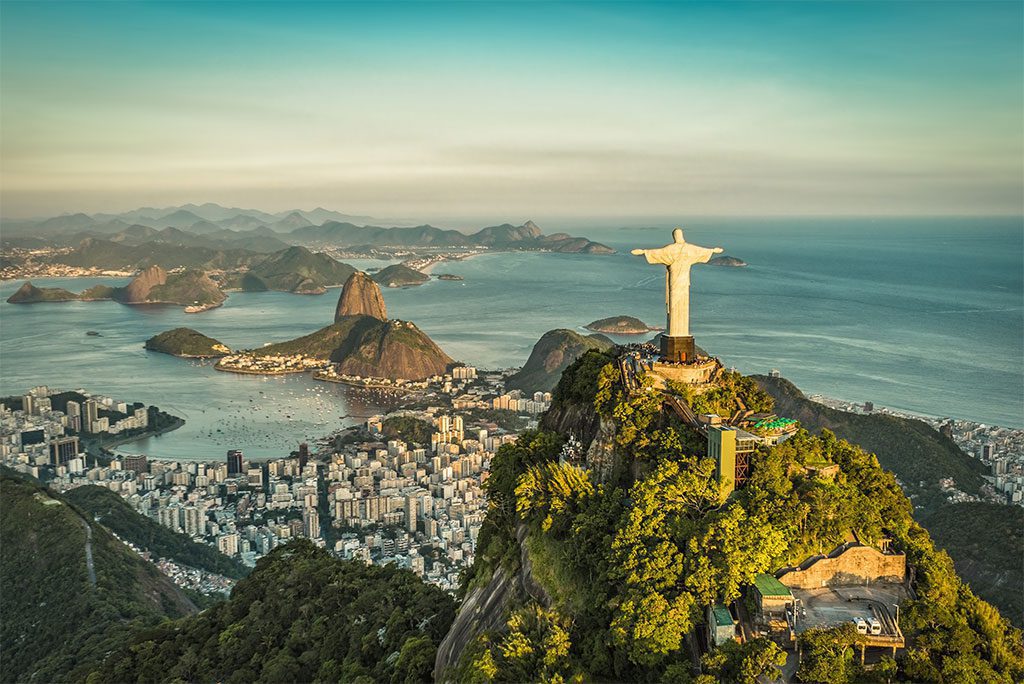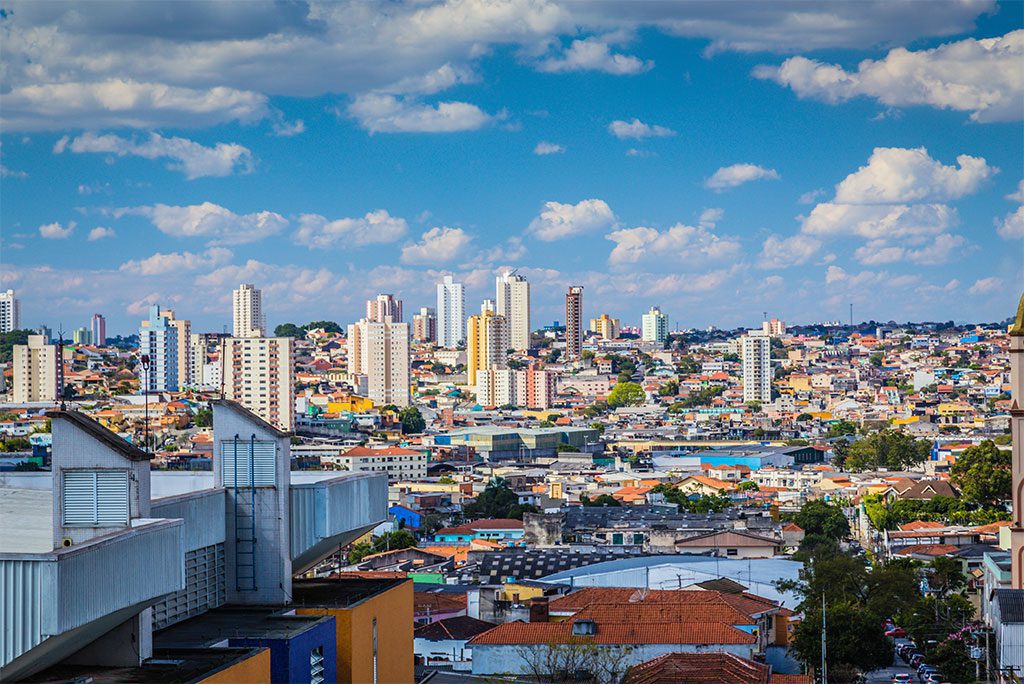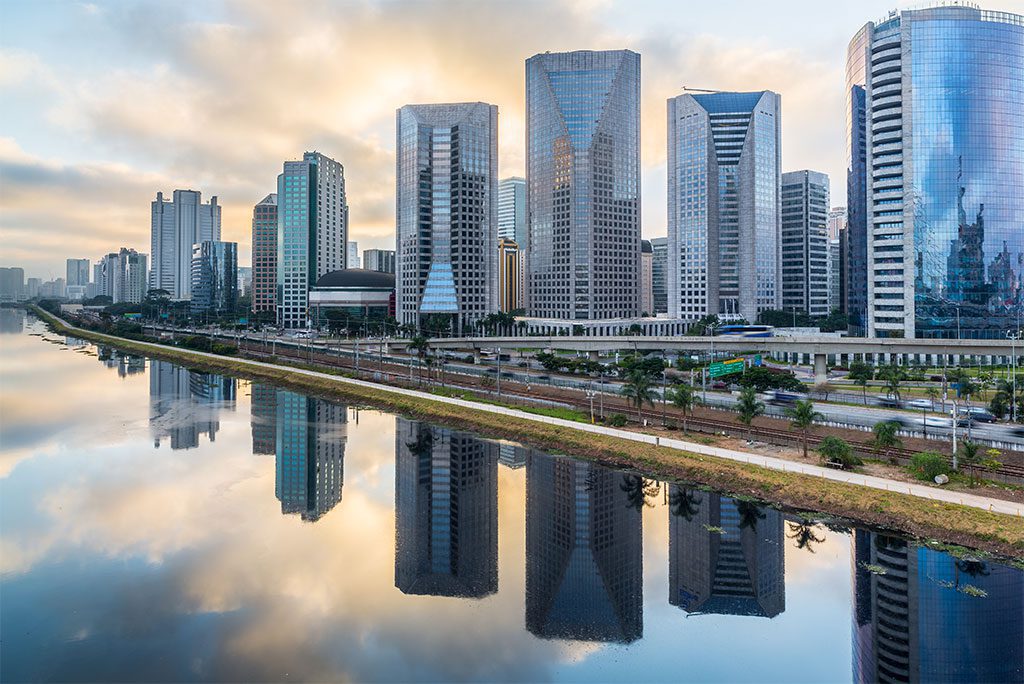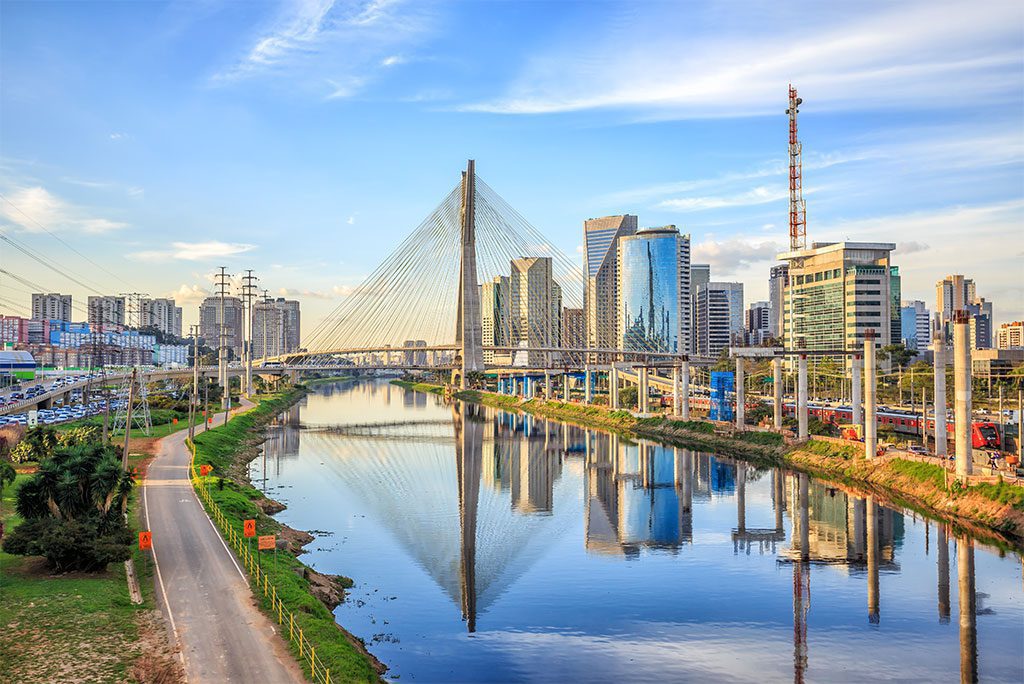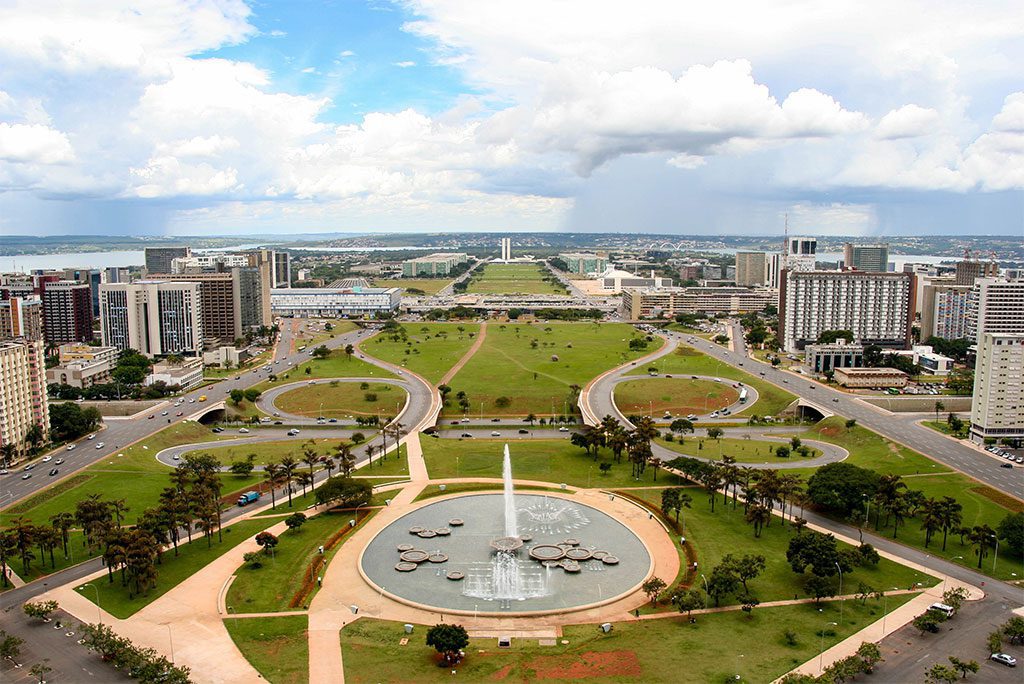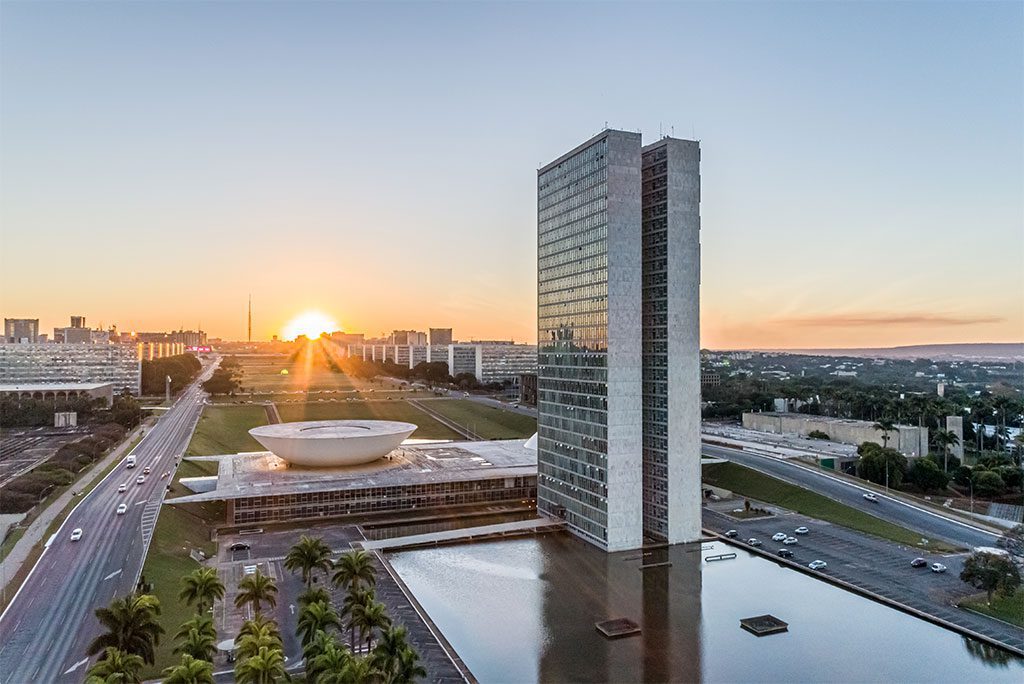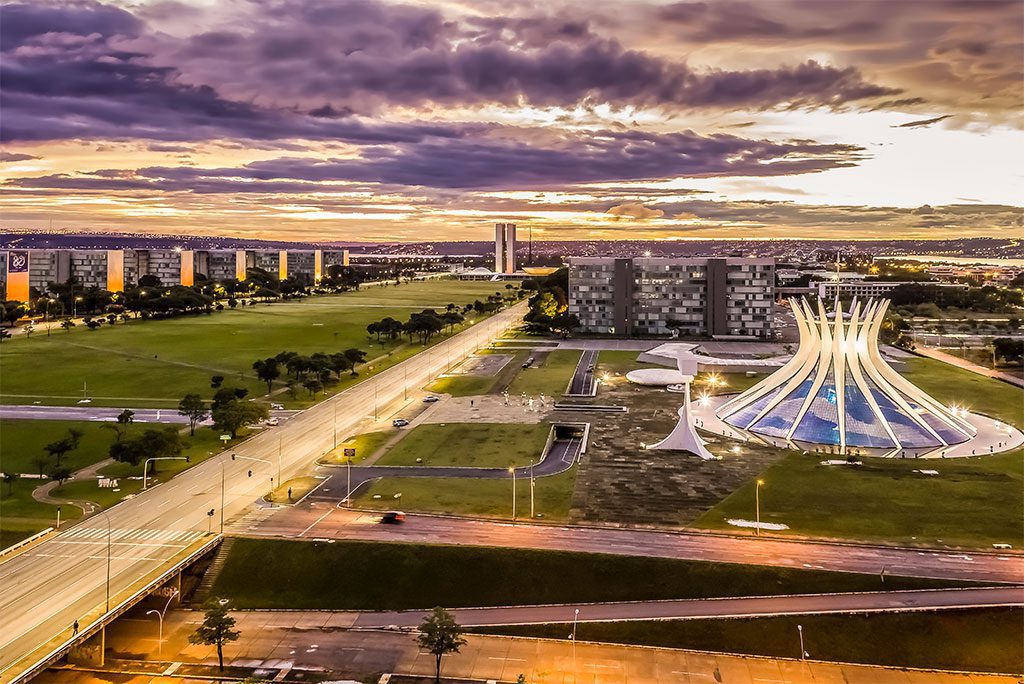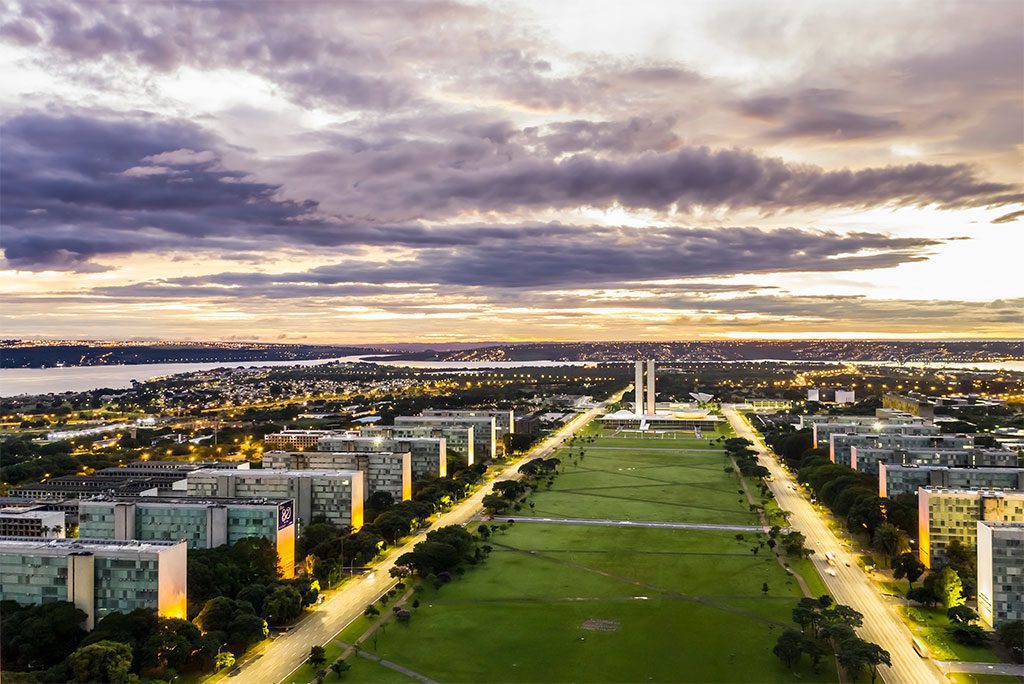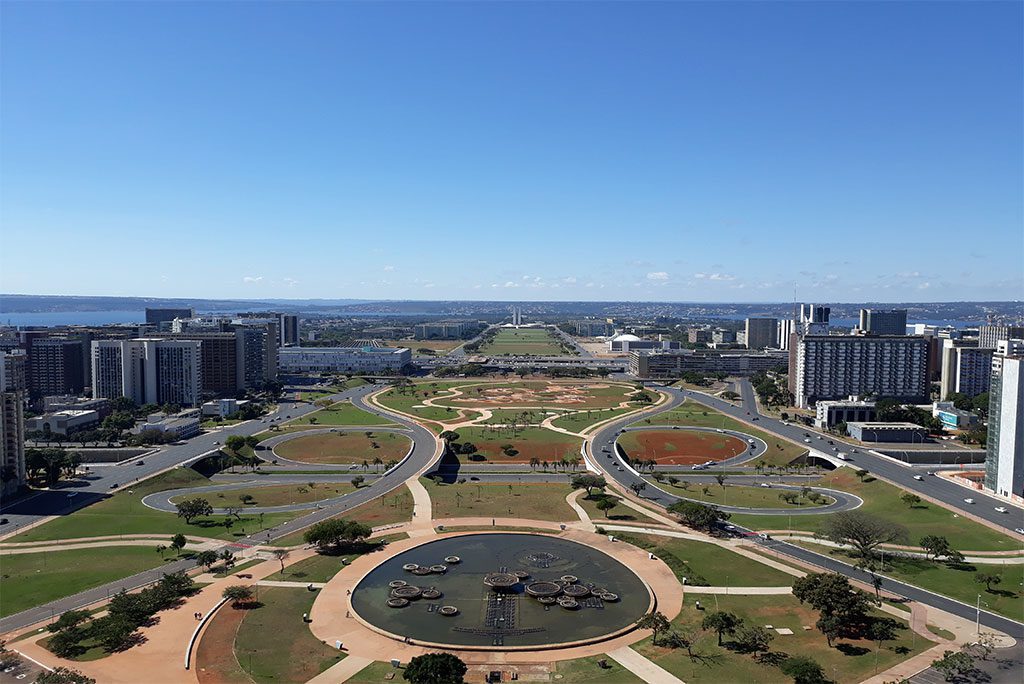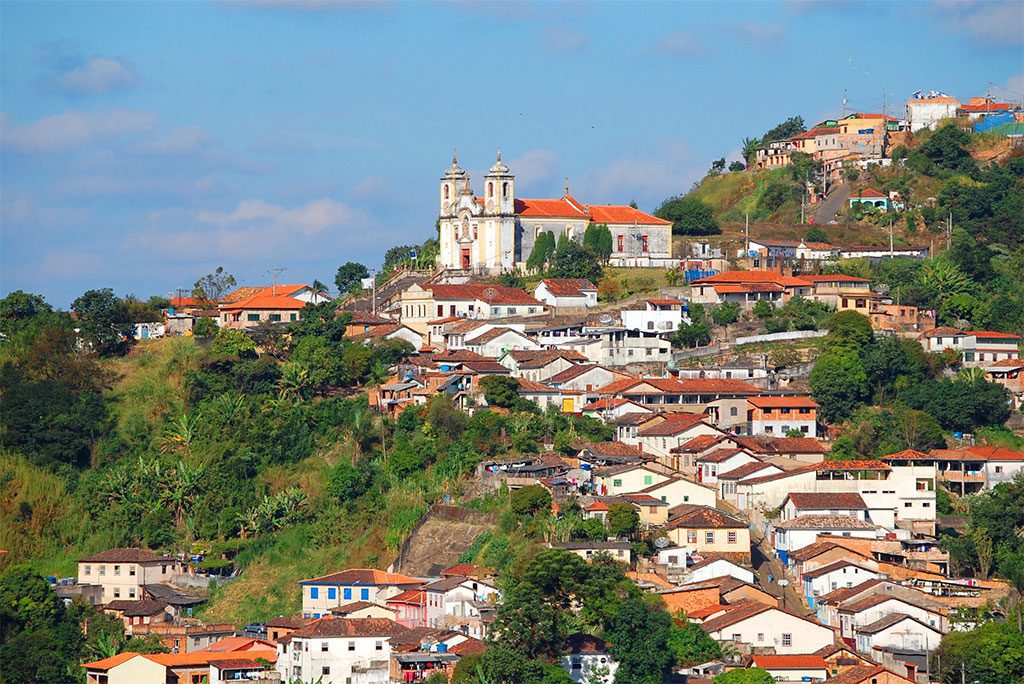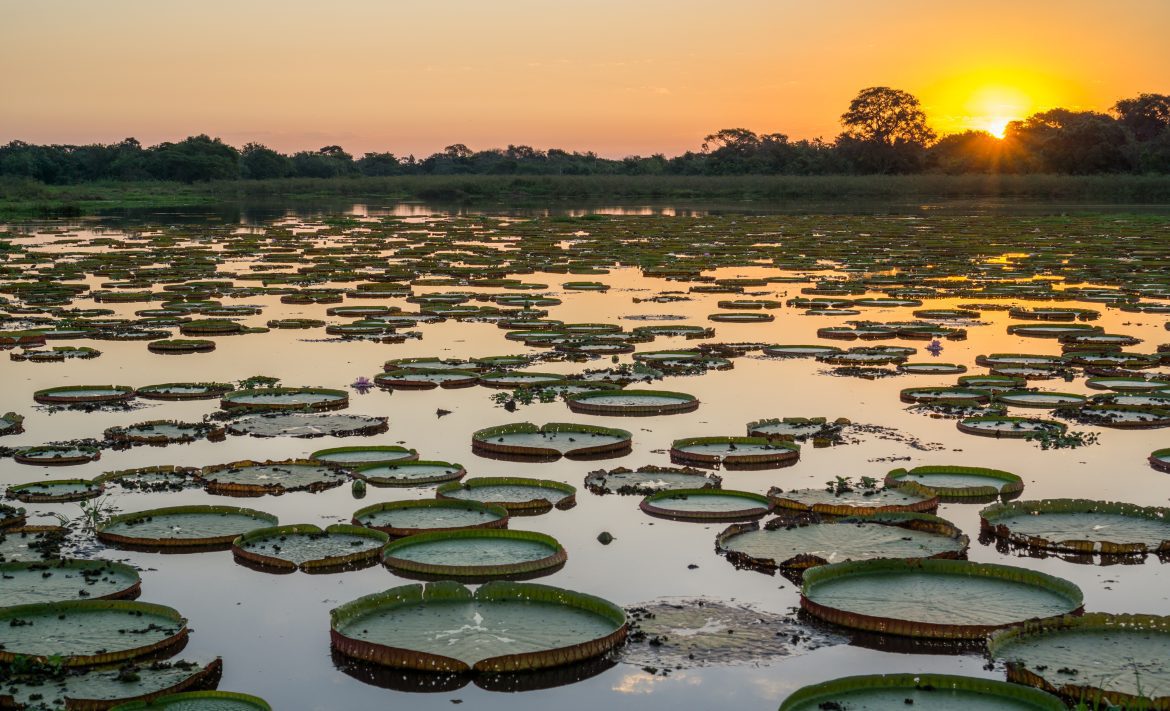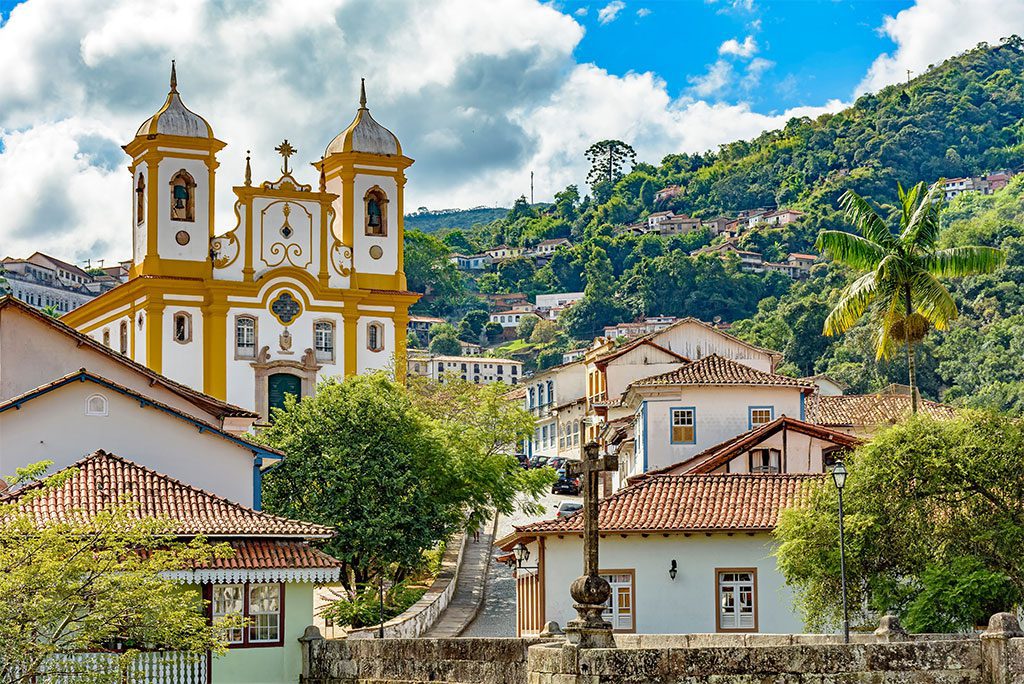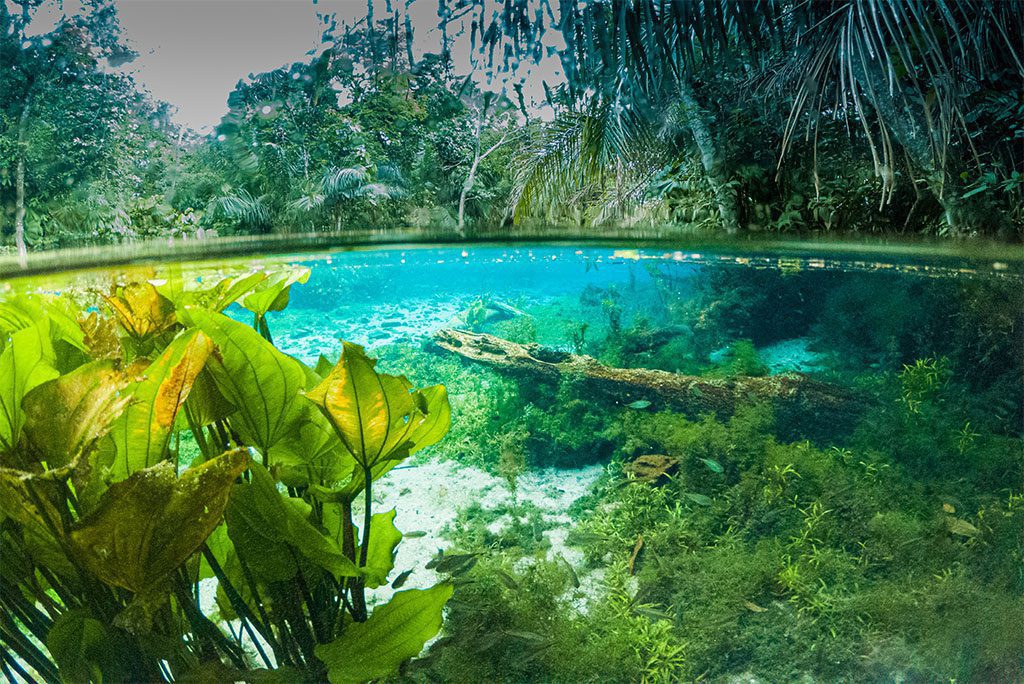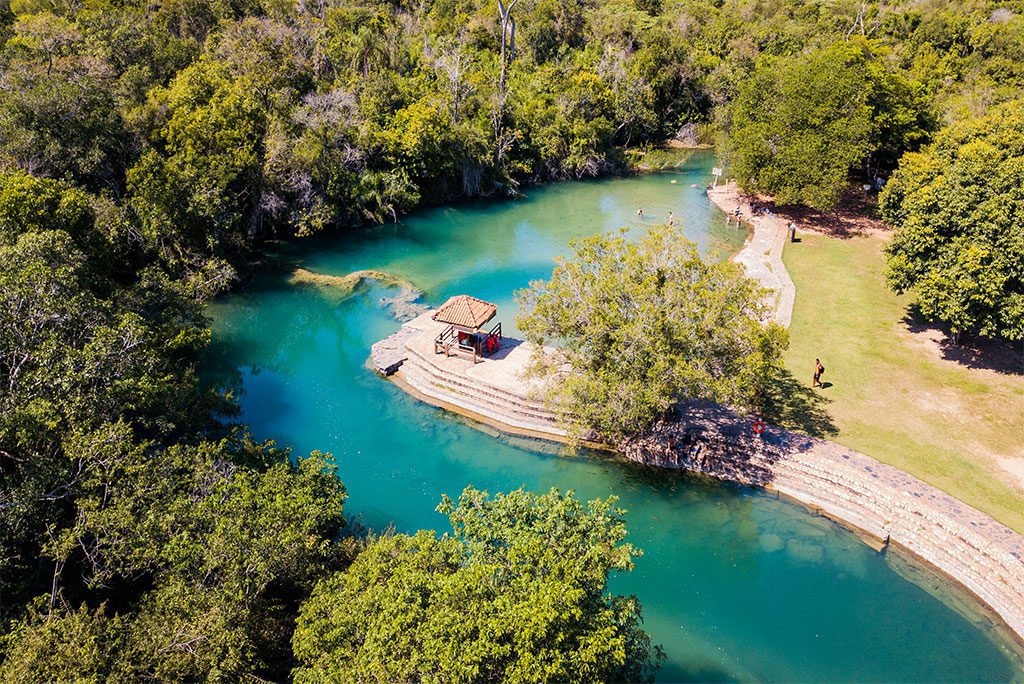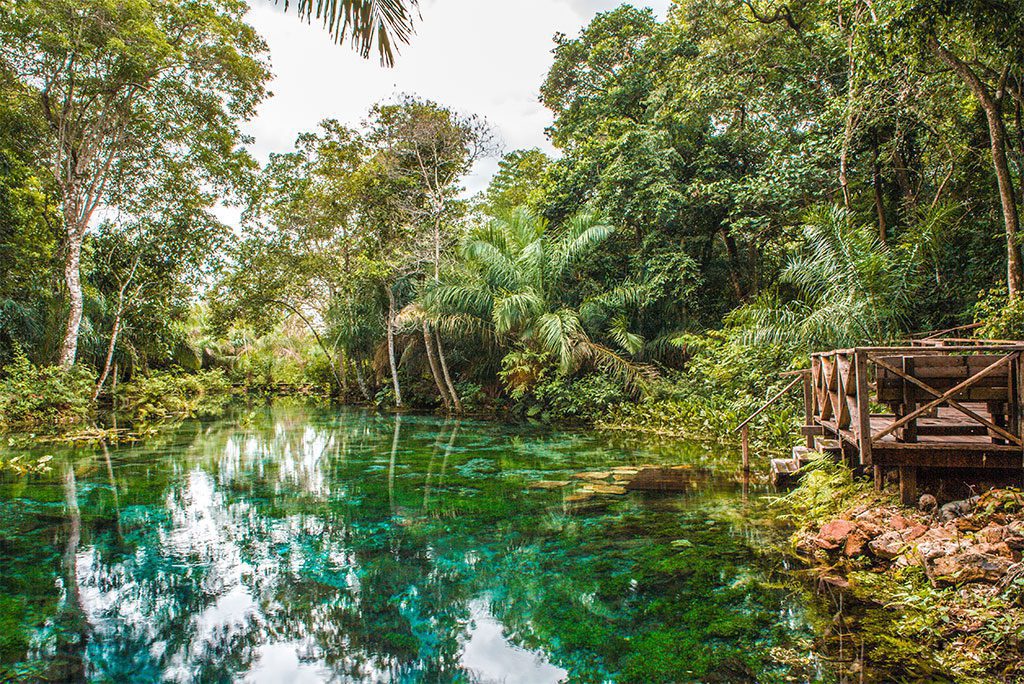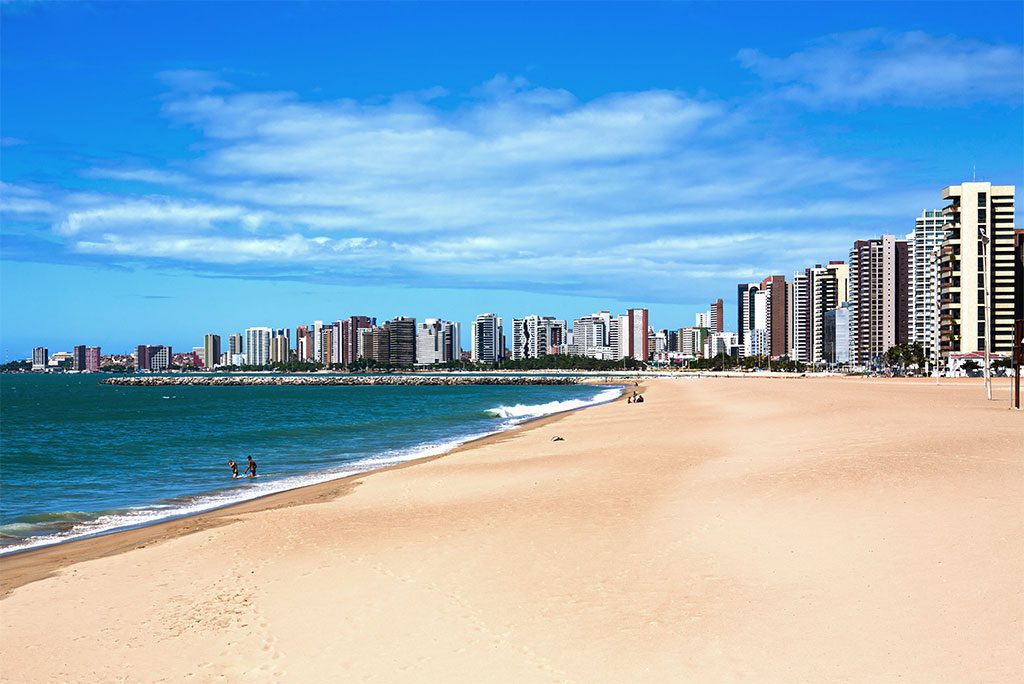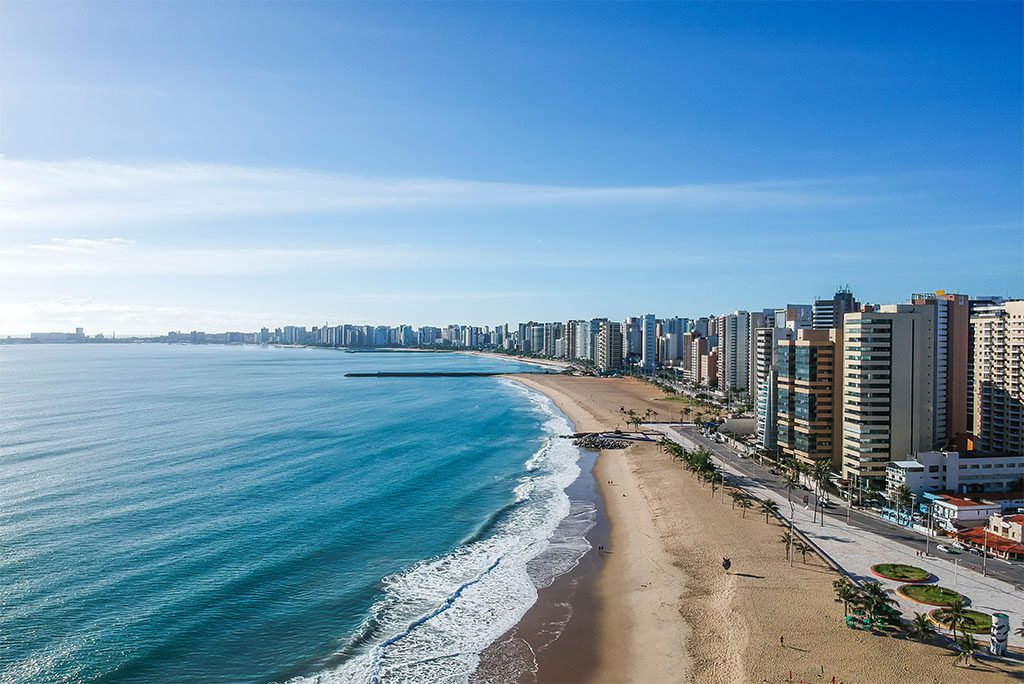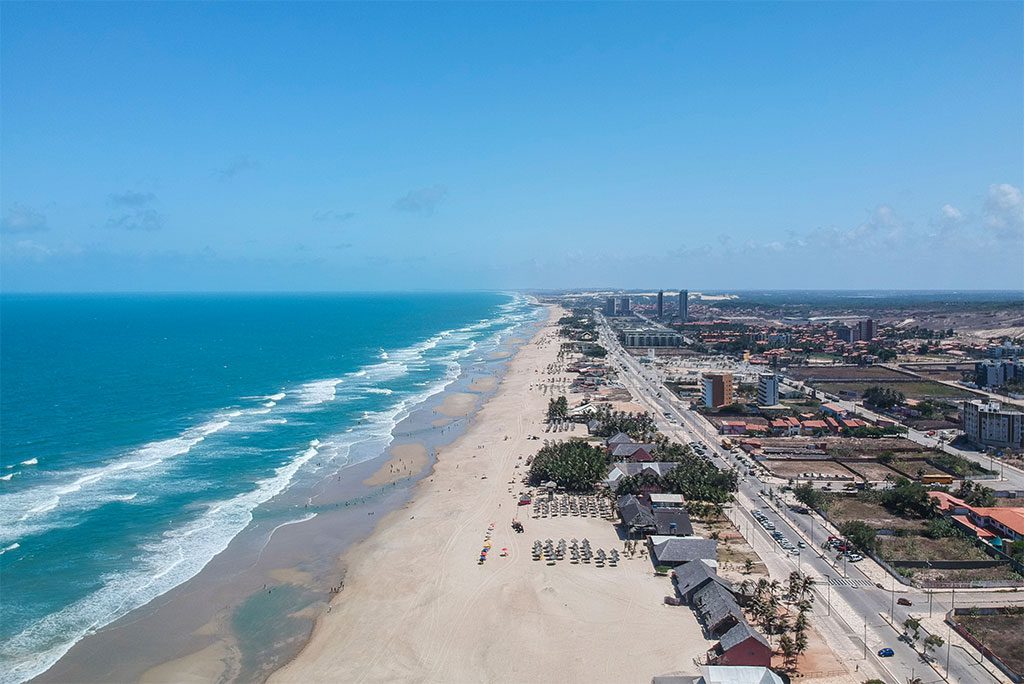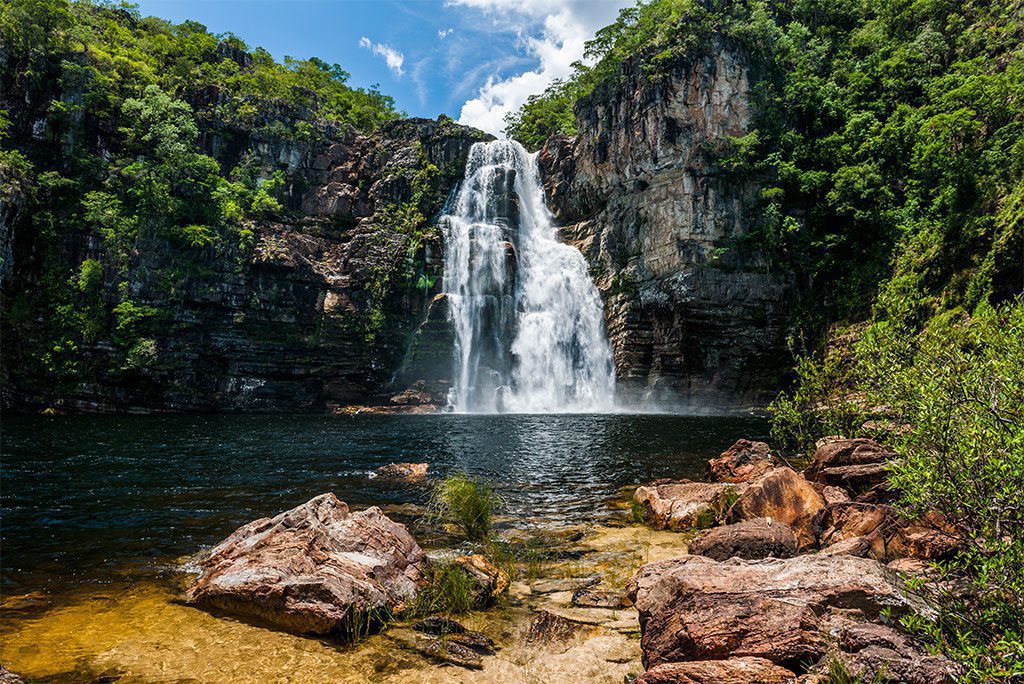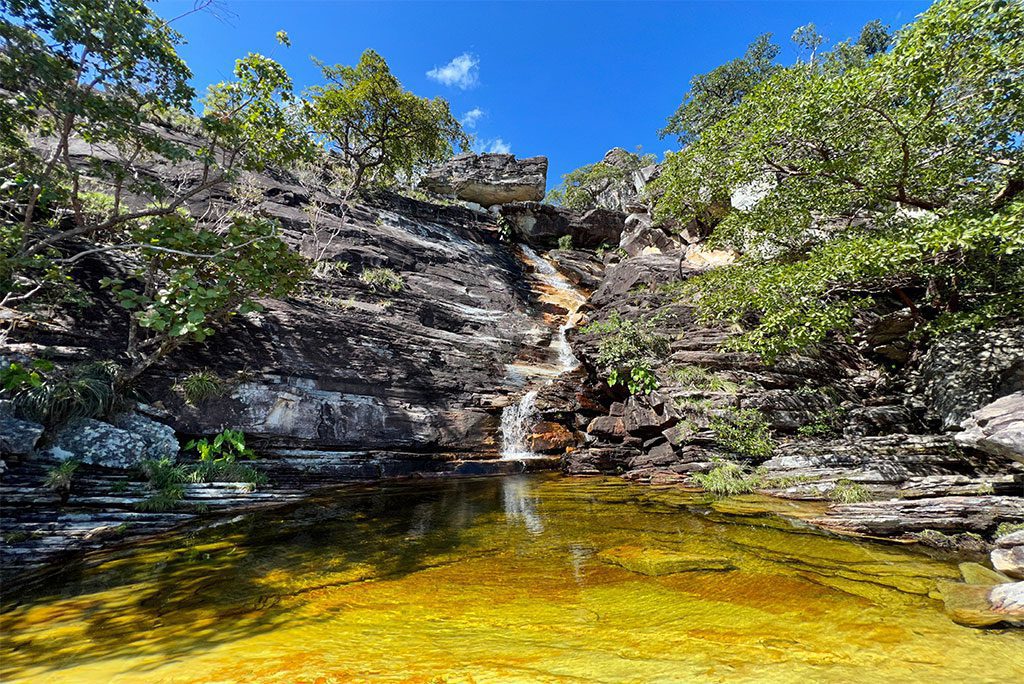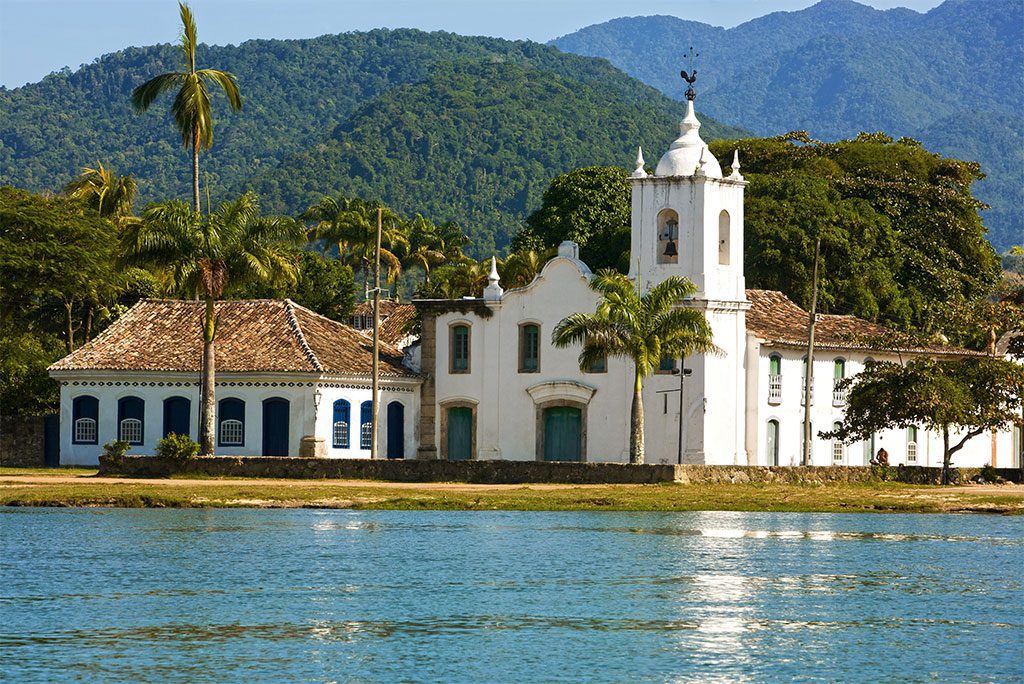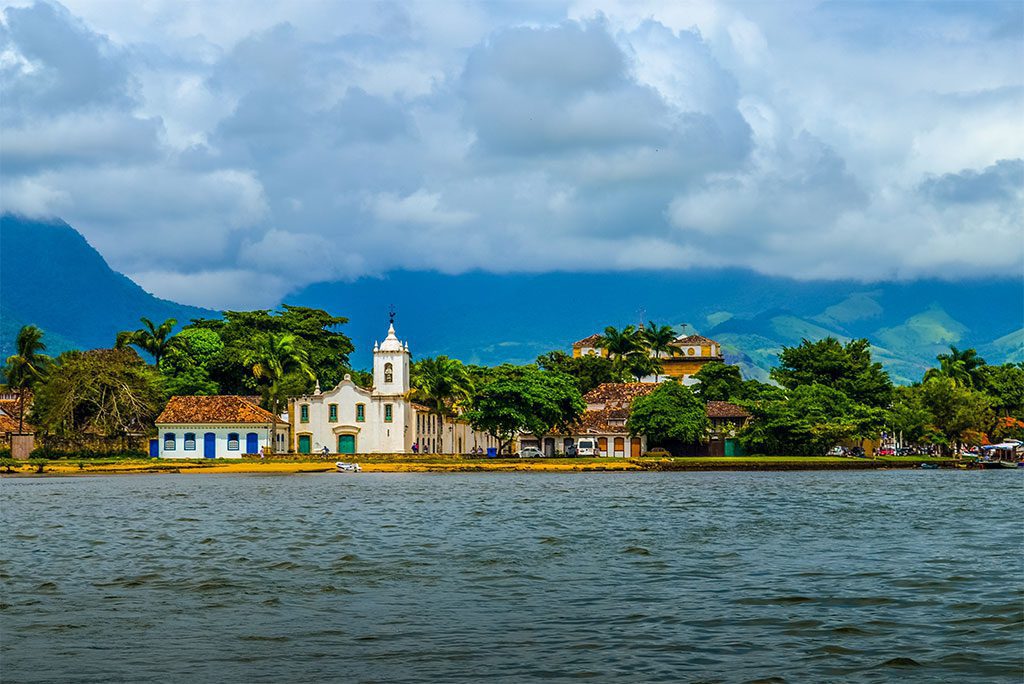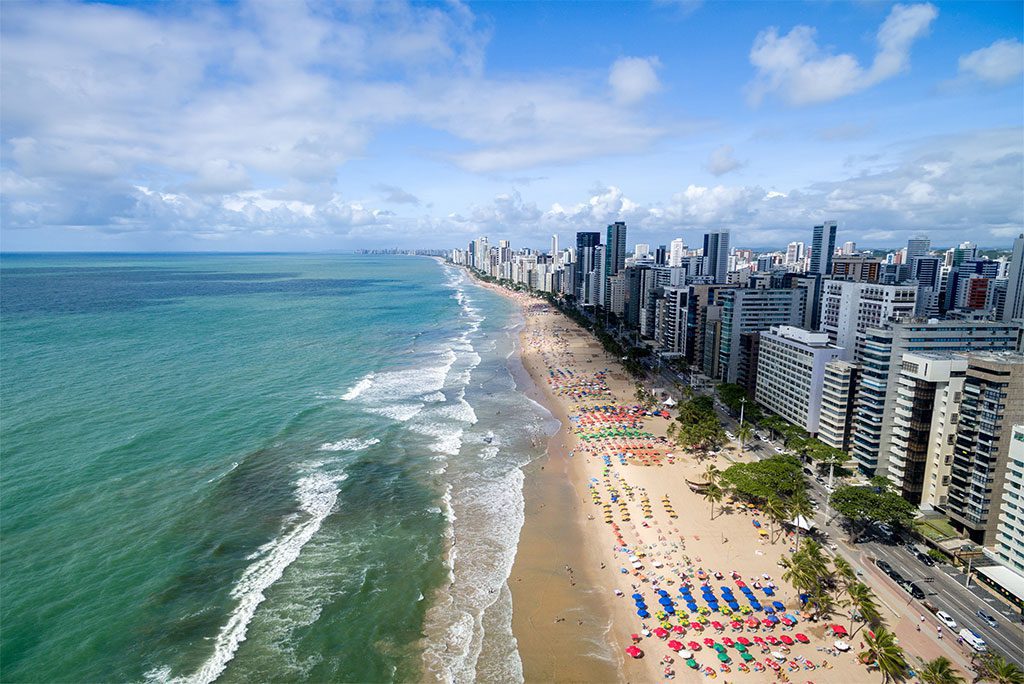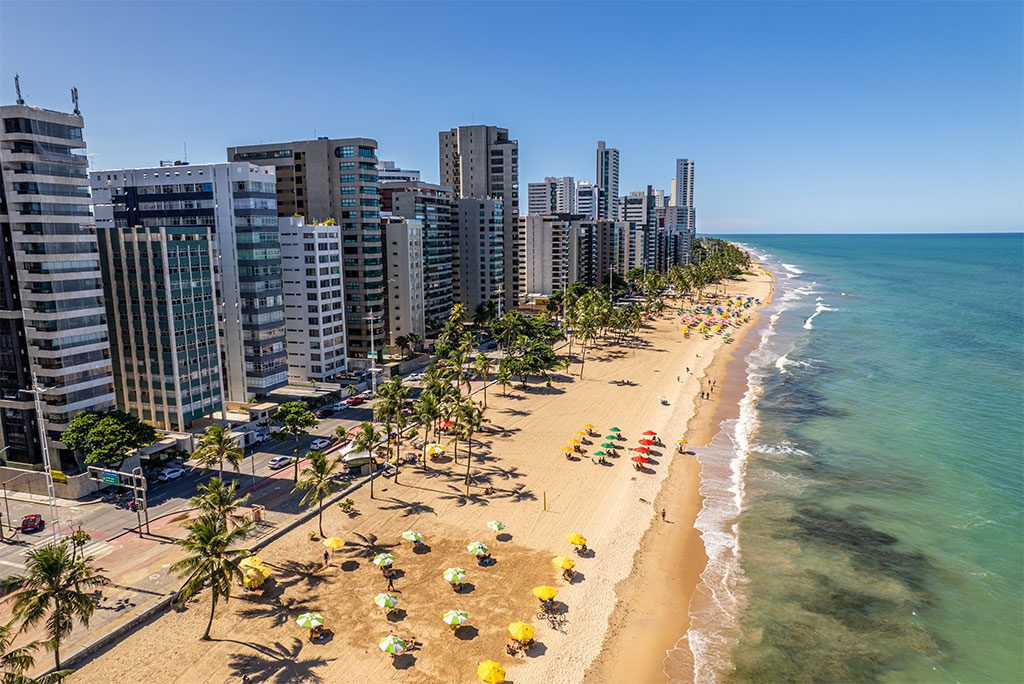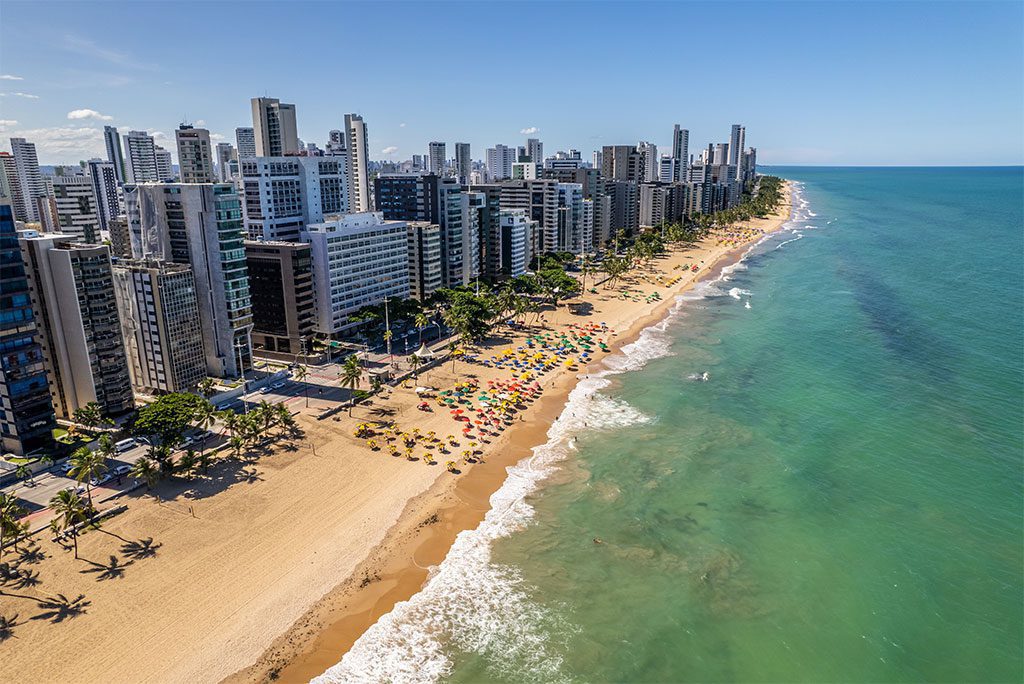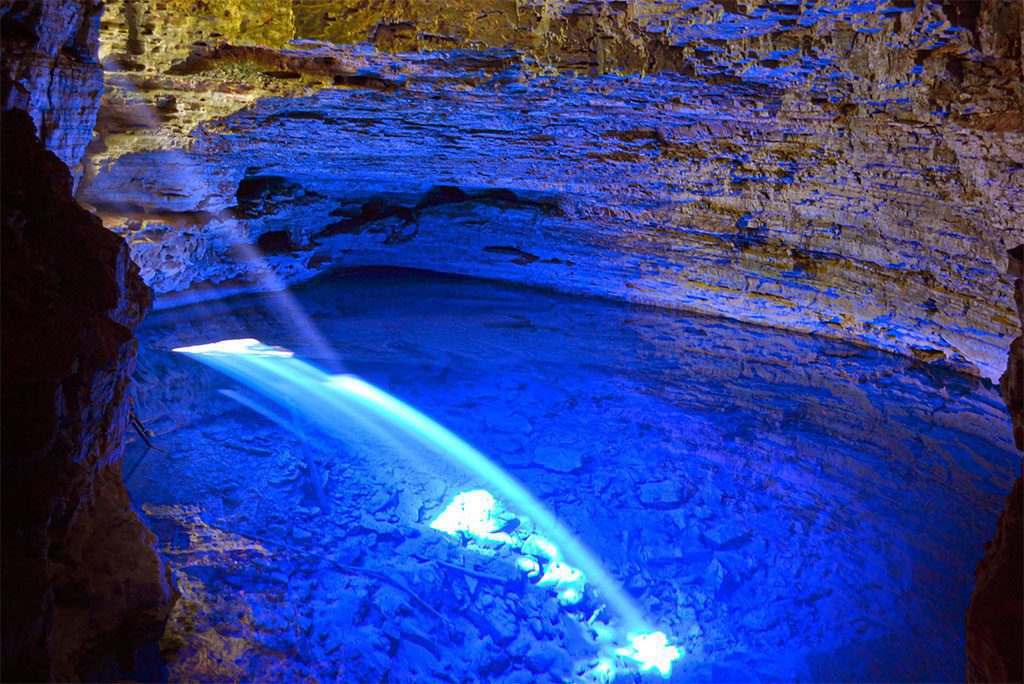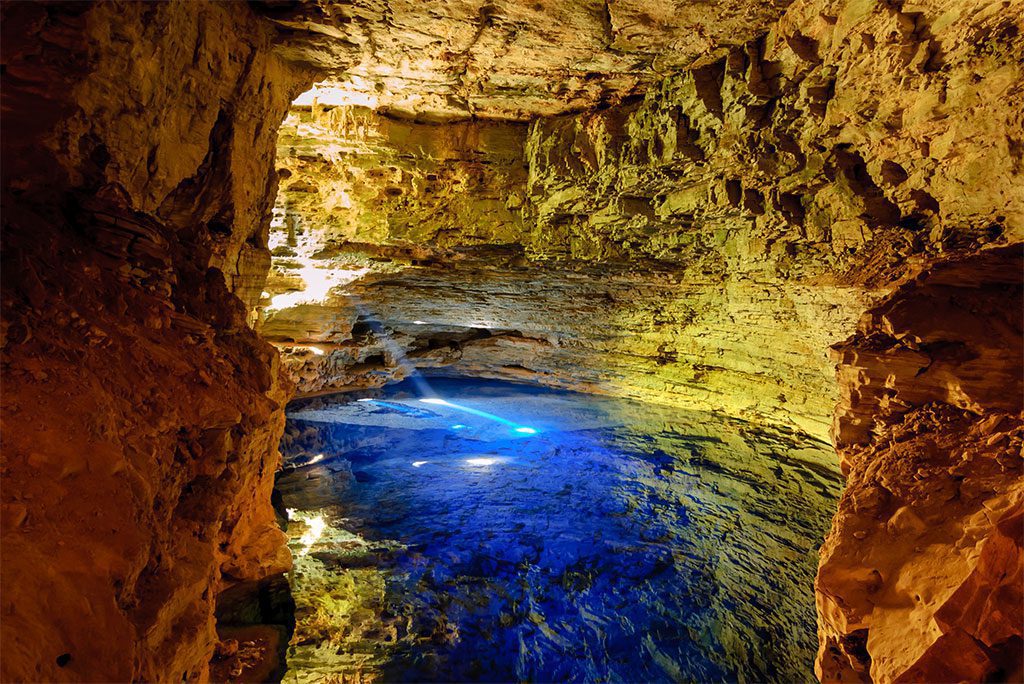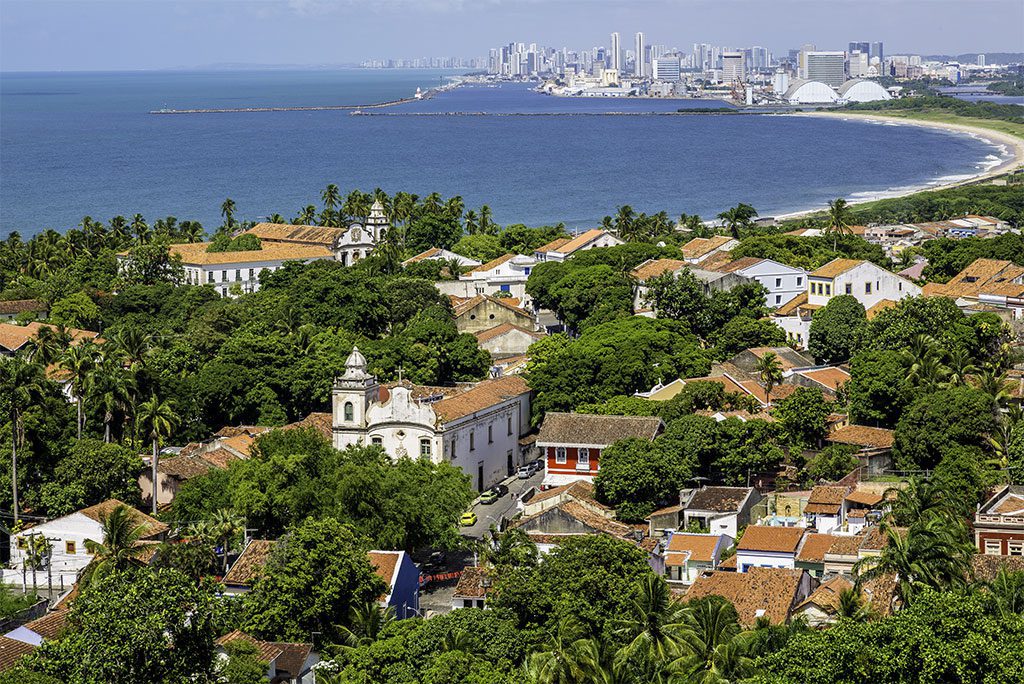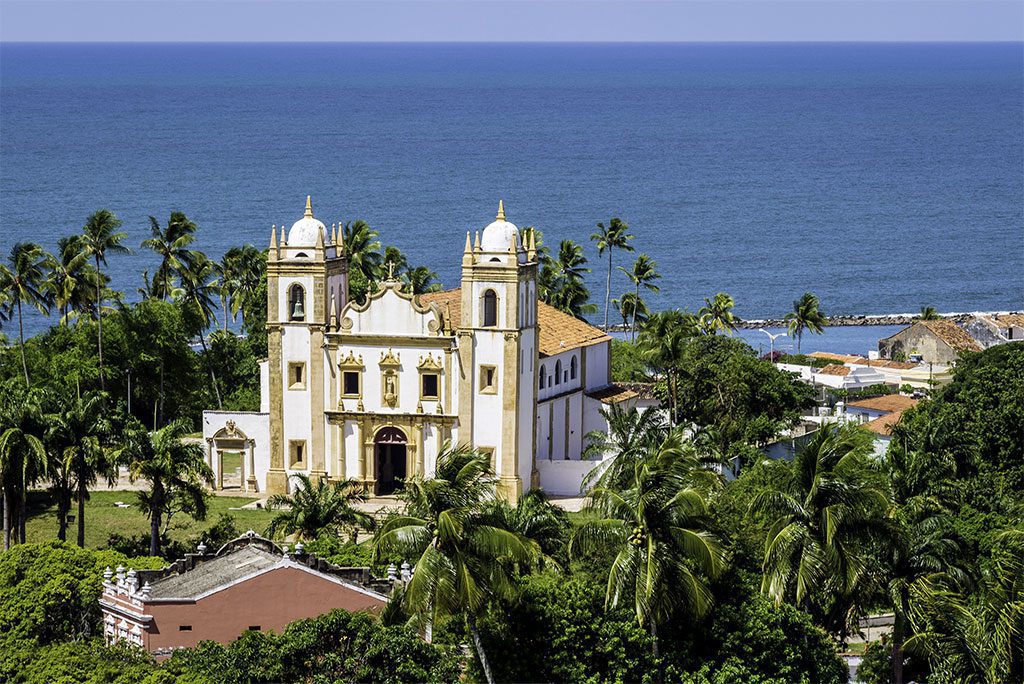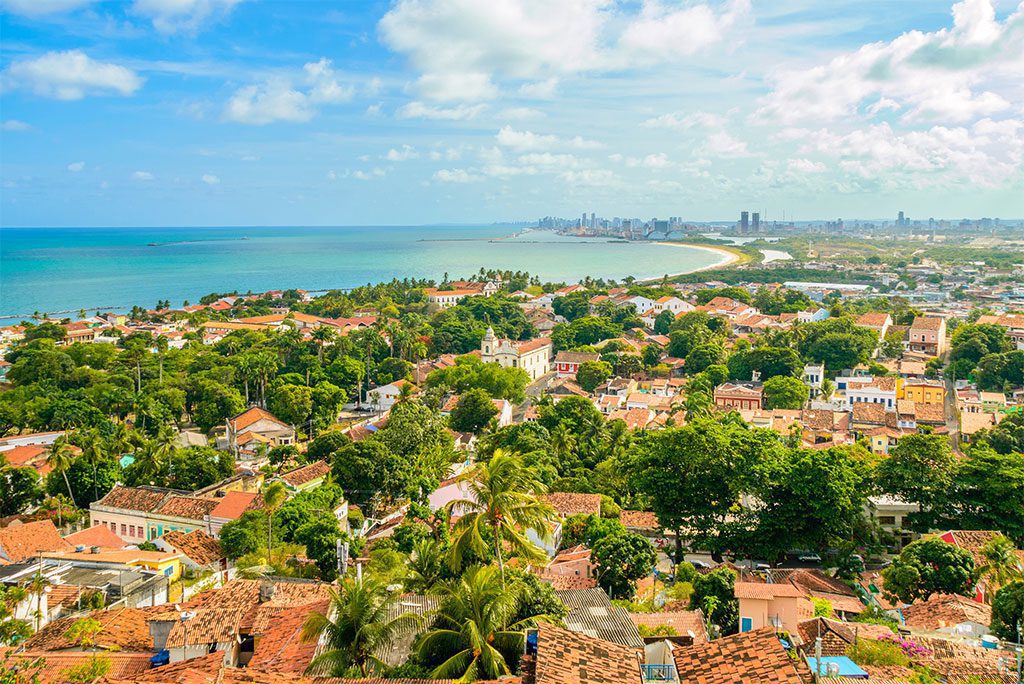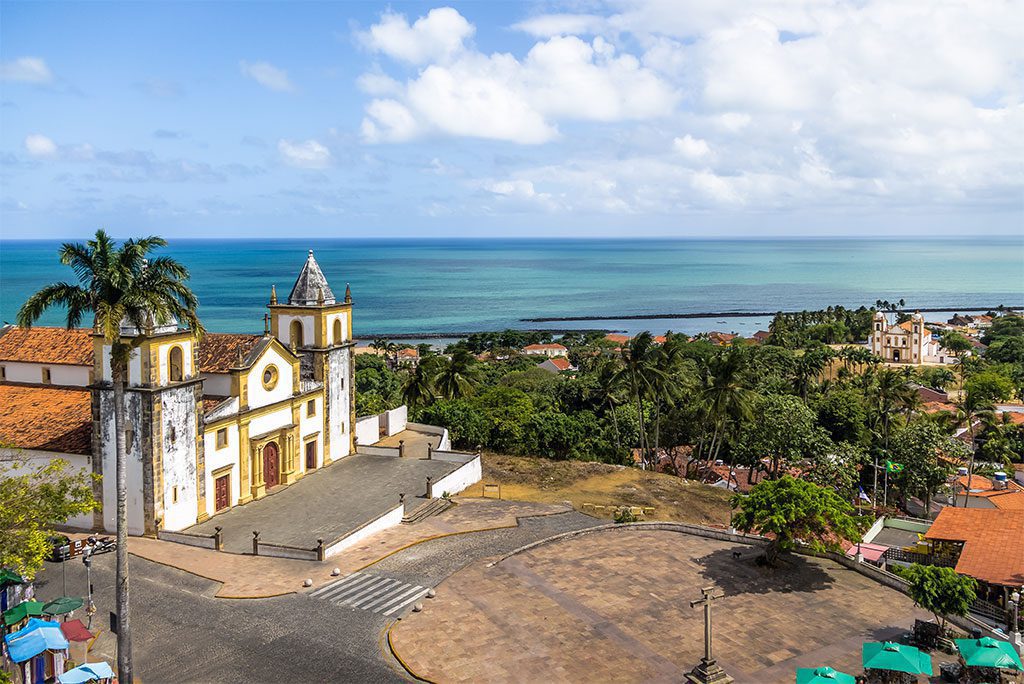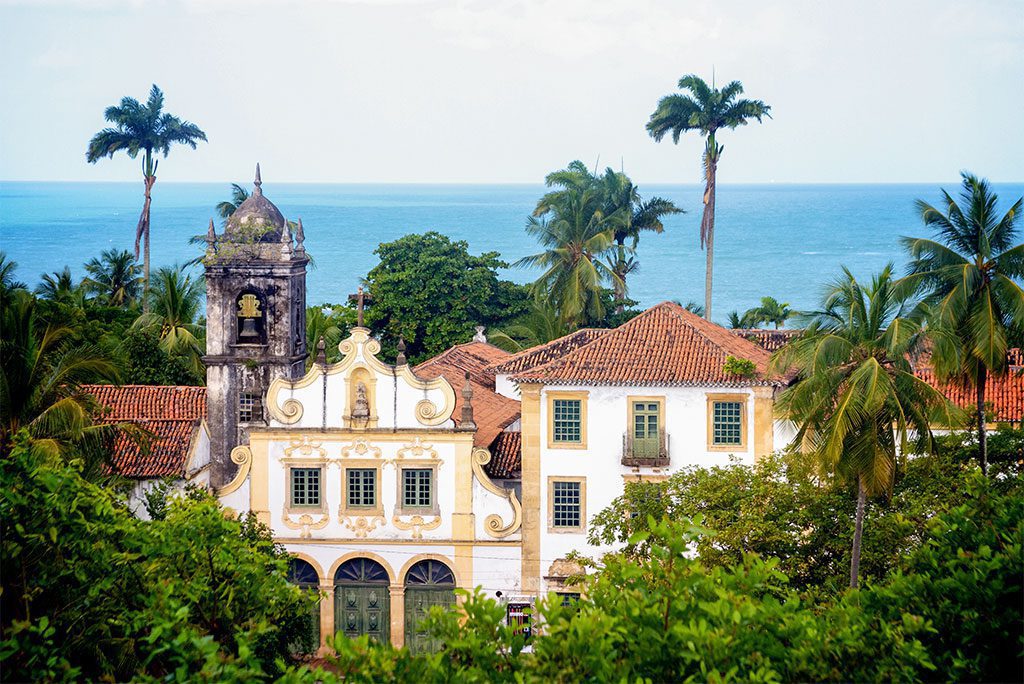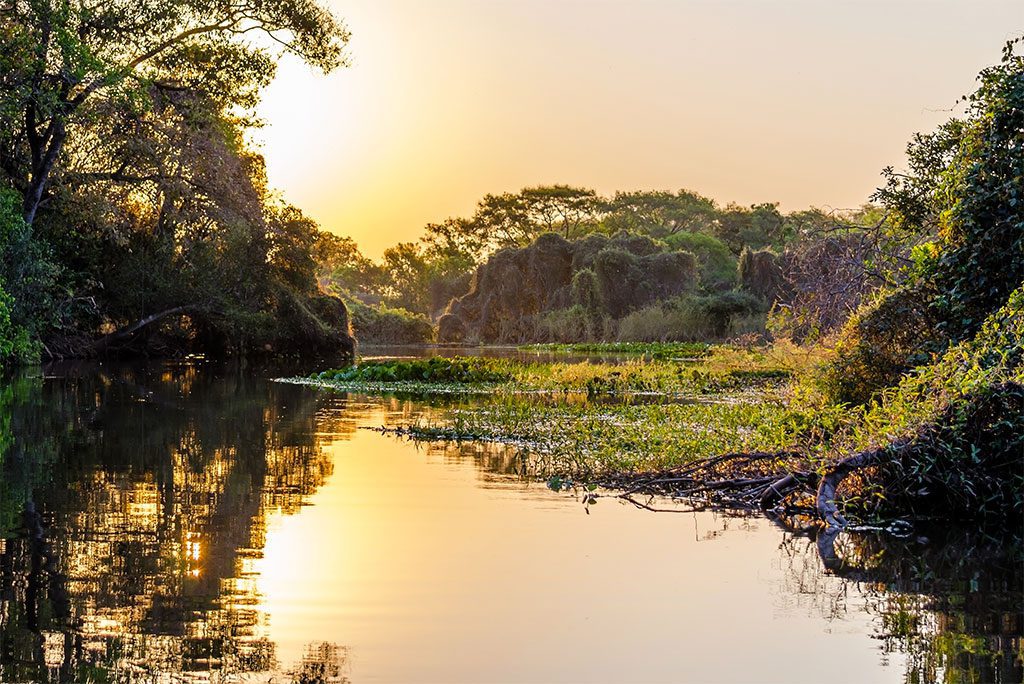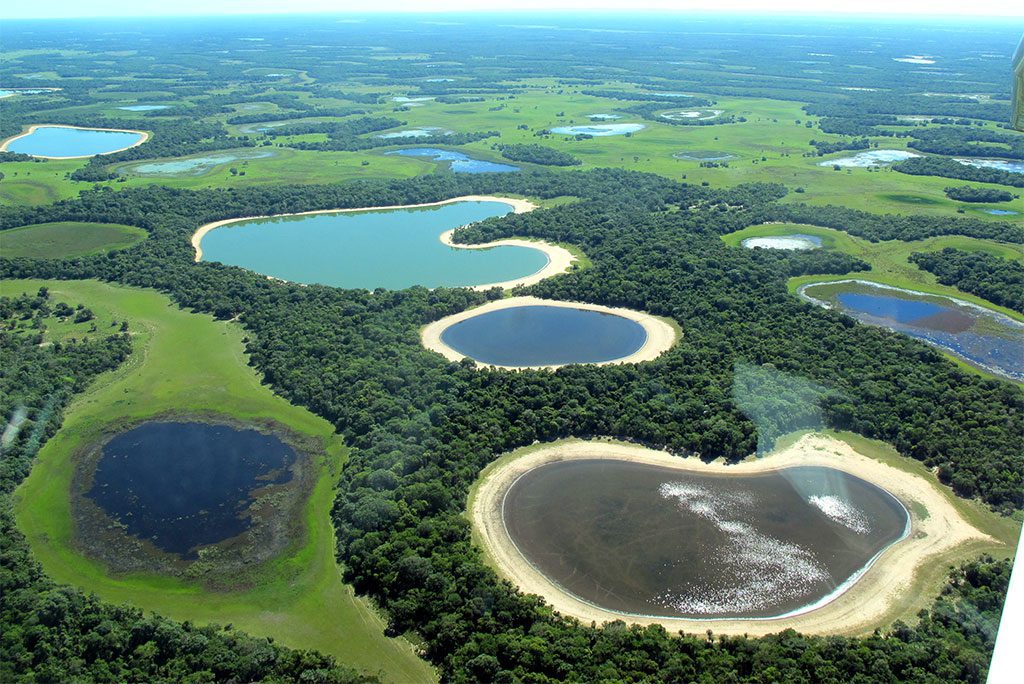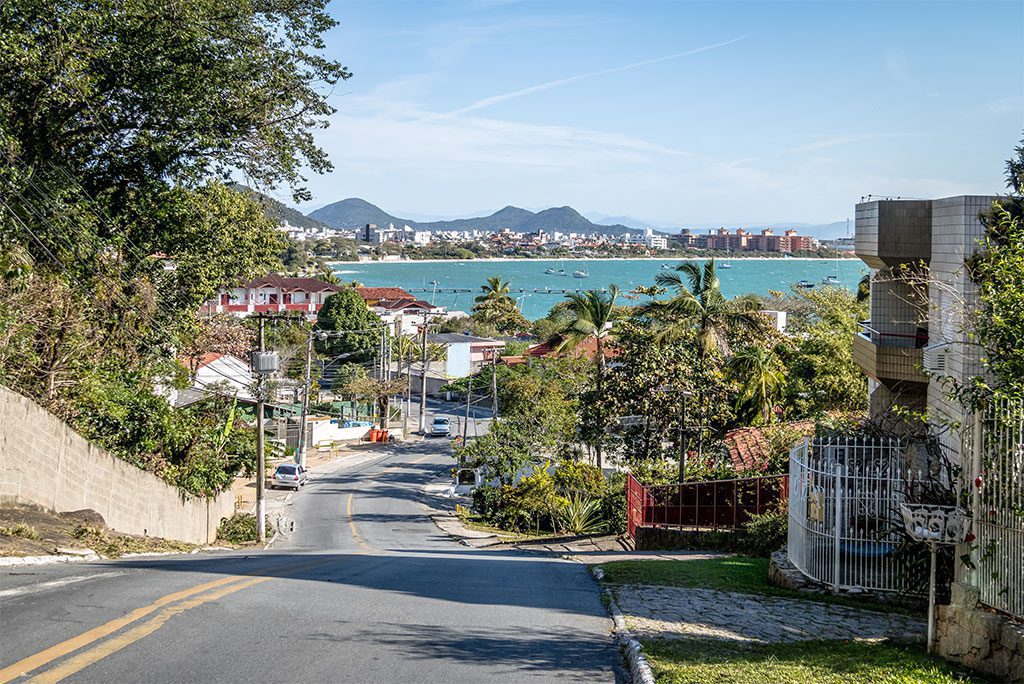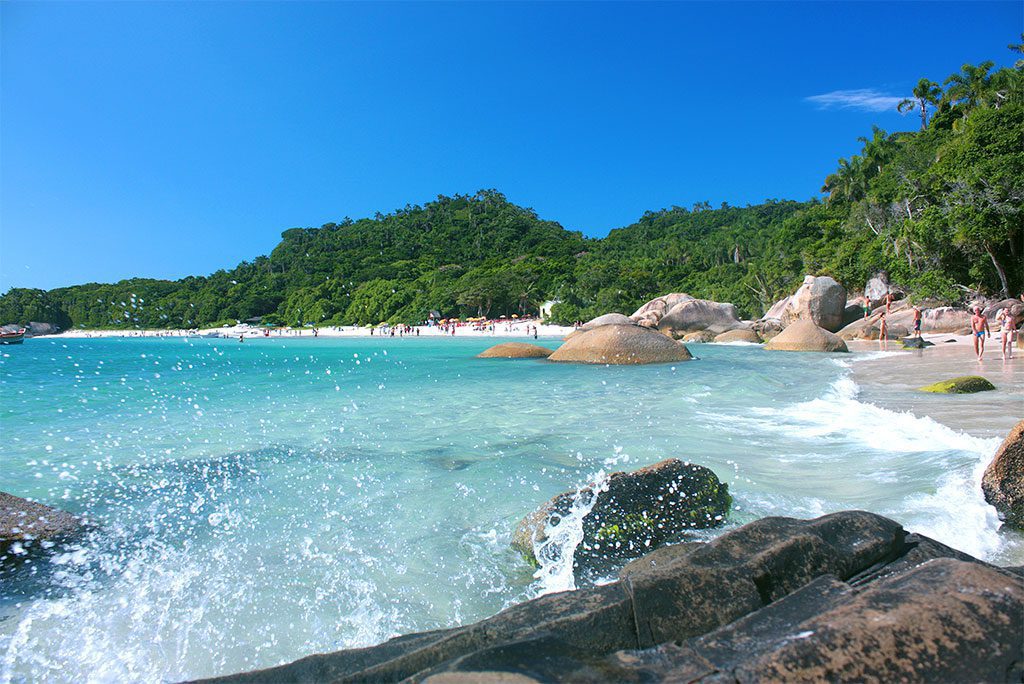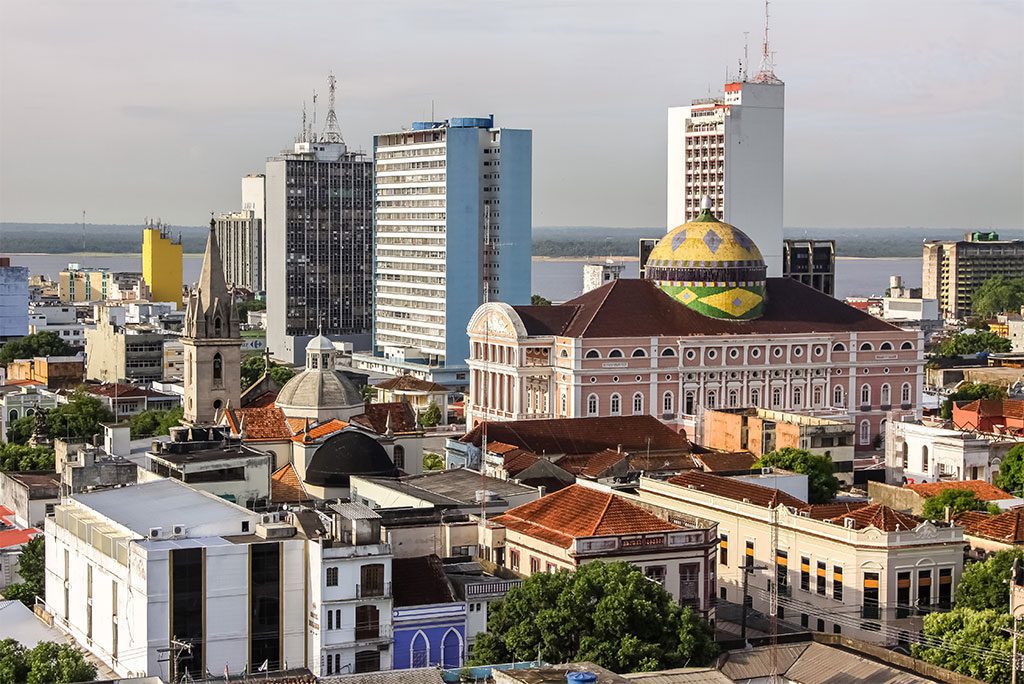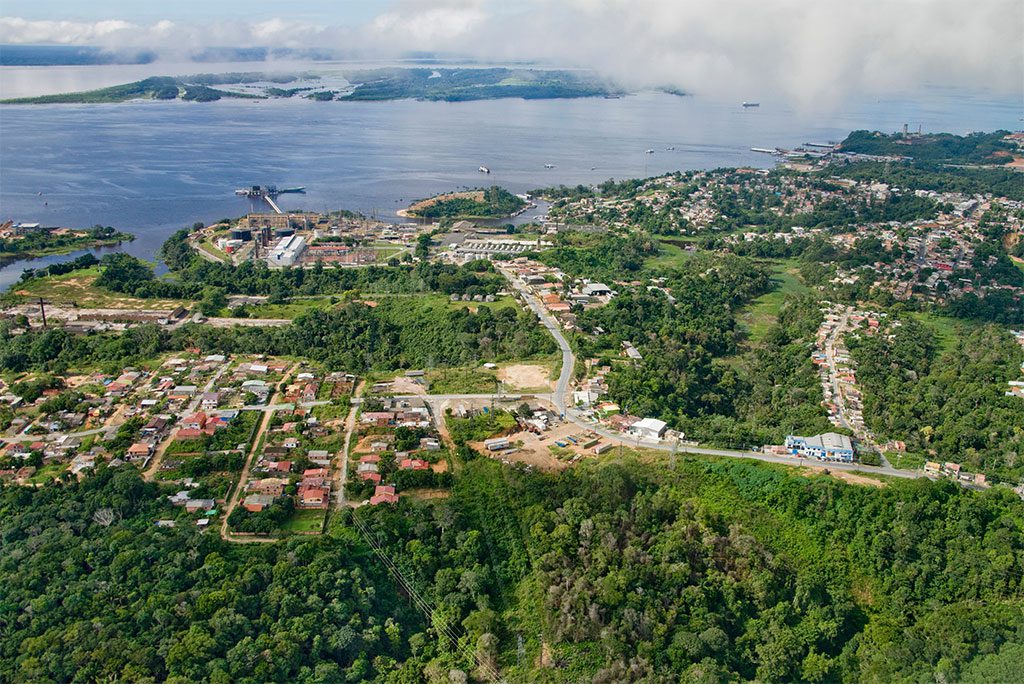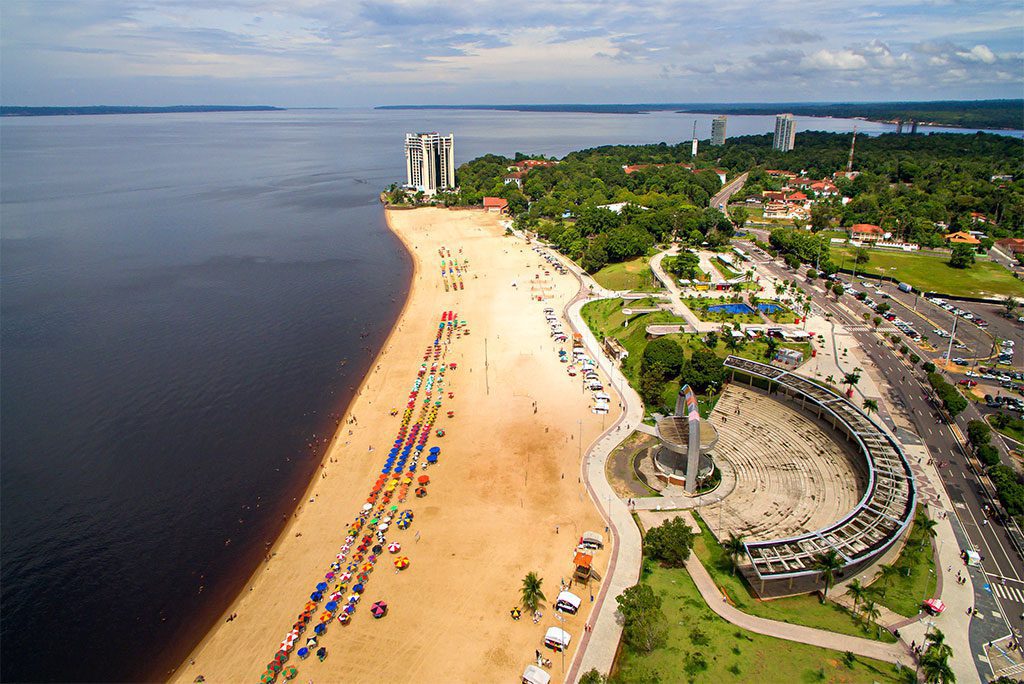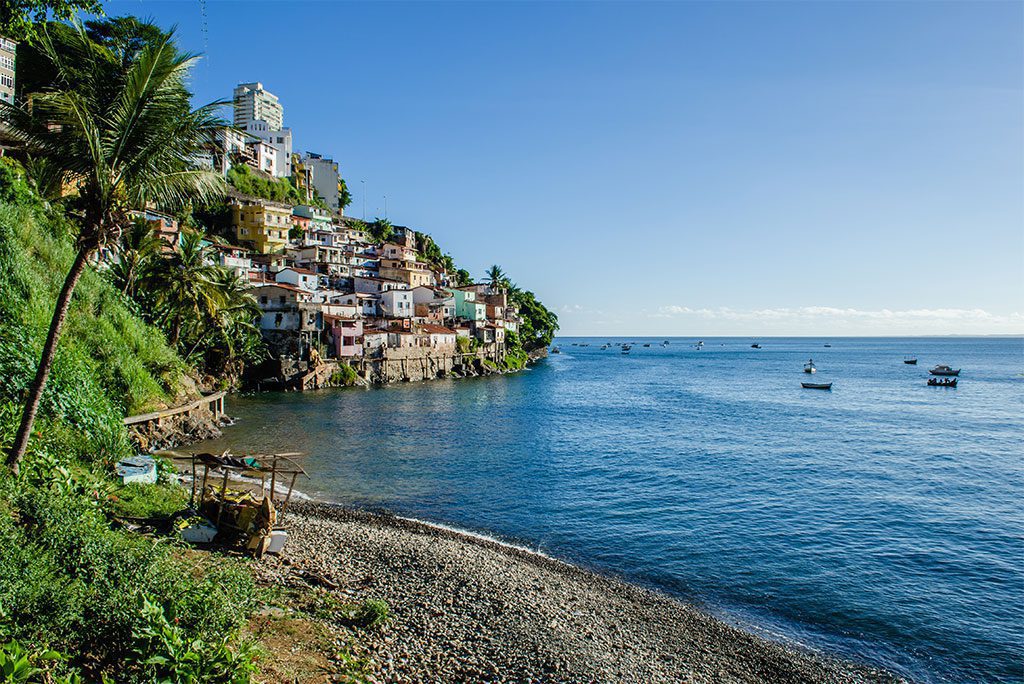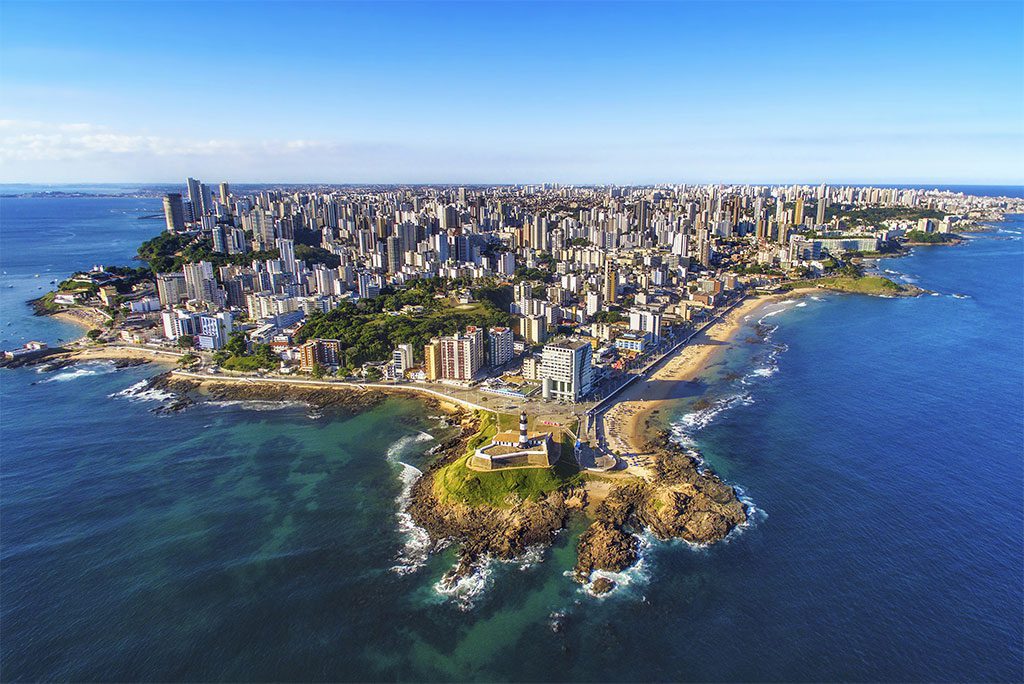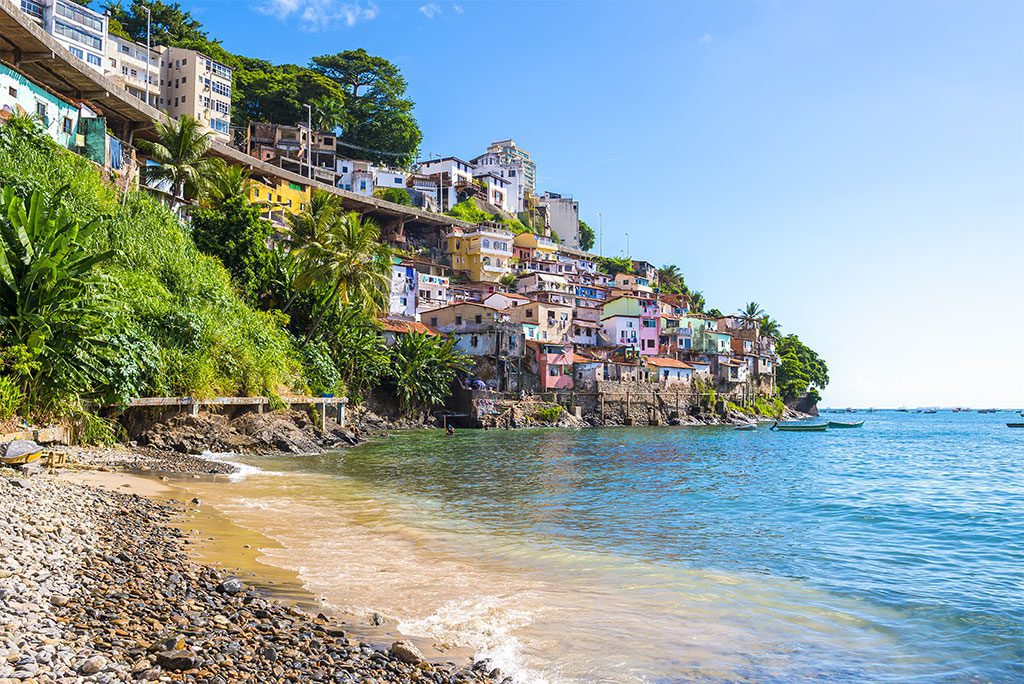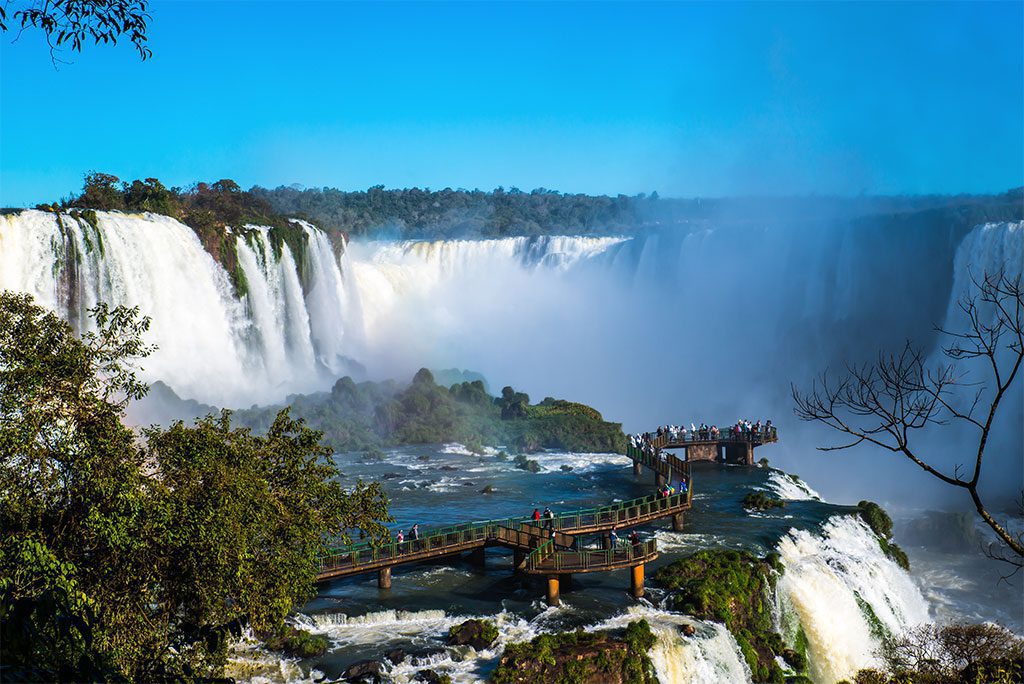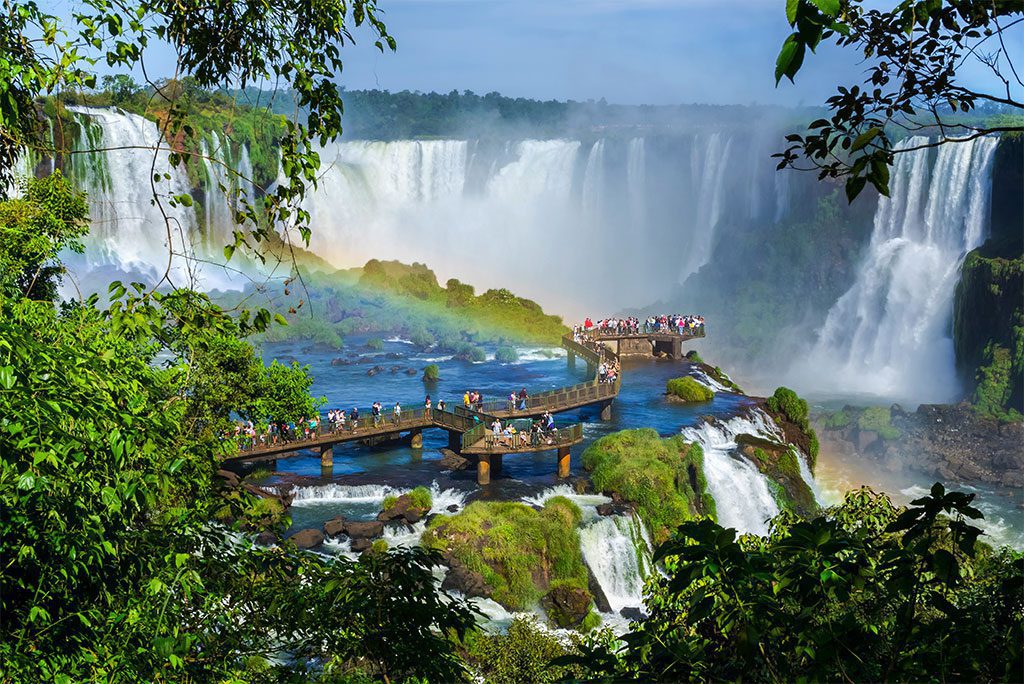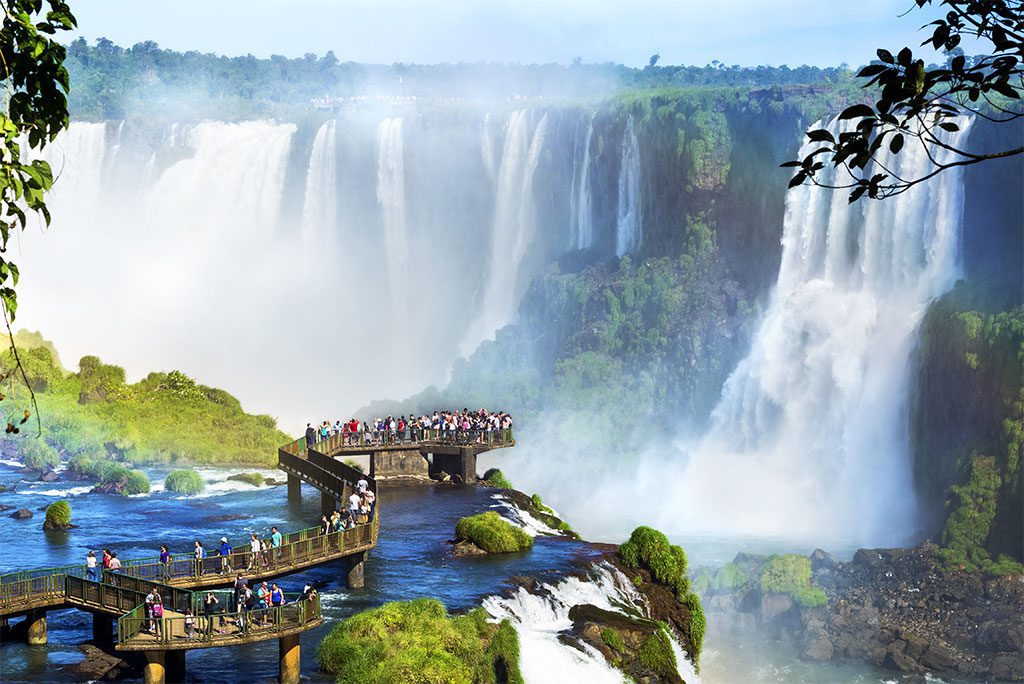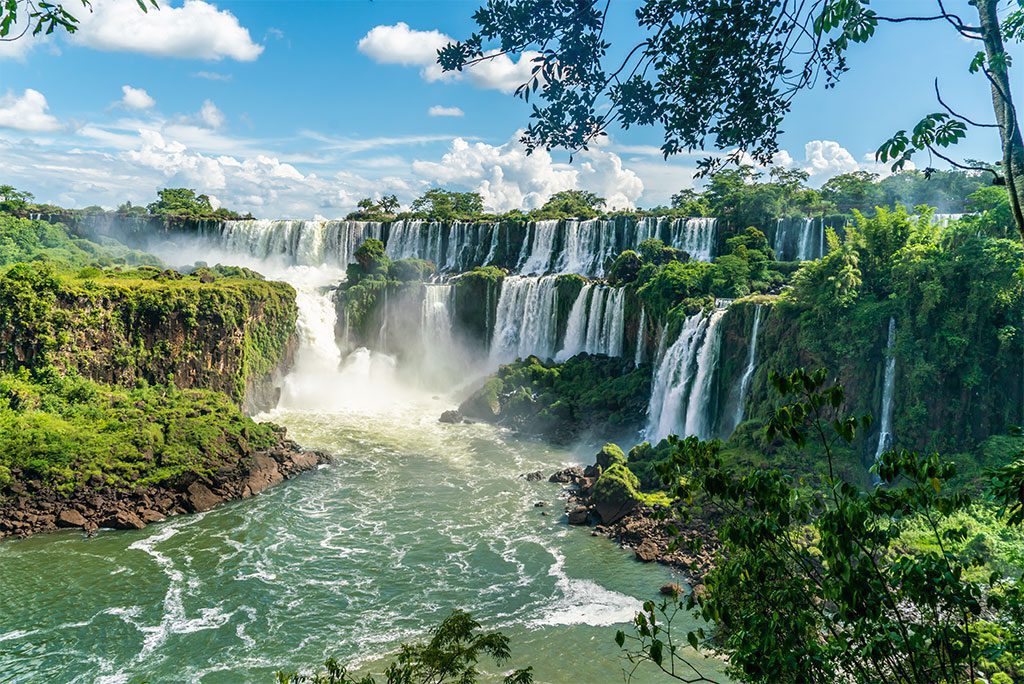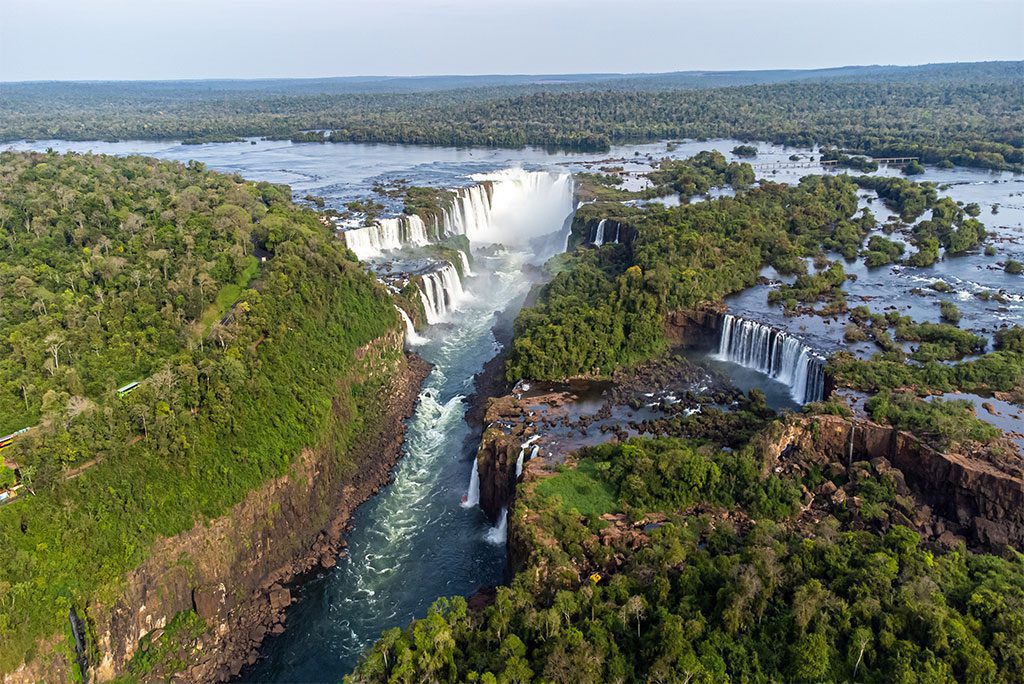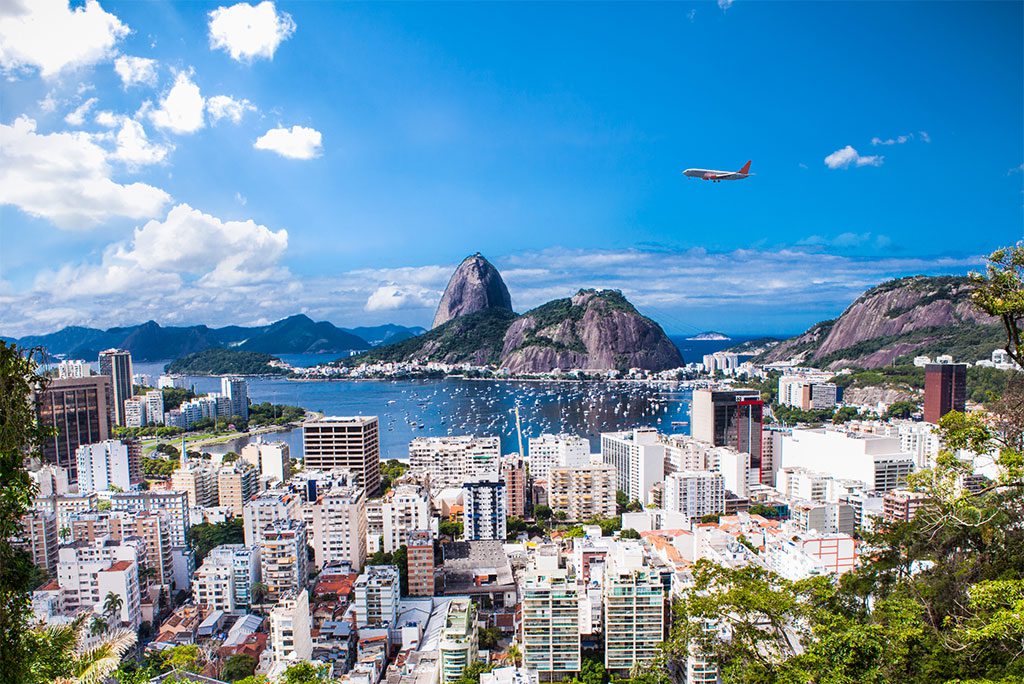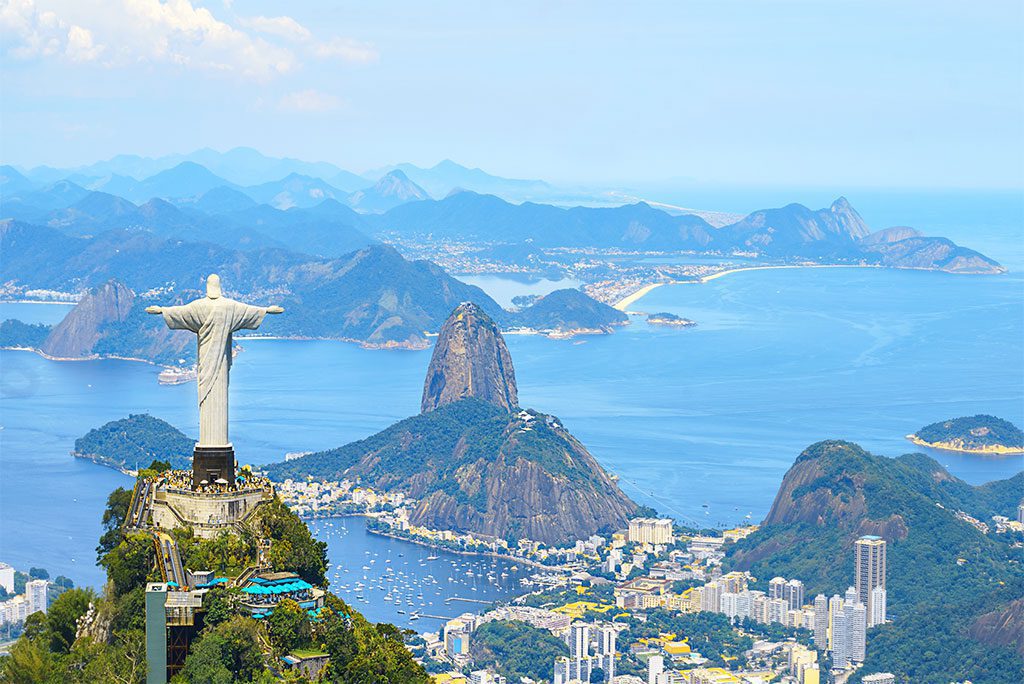Brazil is a popular tourist destination since it is home to one of the best football teams in the world, the Rio de Janeiro Carnival, and the breathtaking Iguazu Falls. Brazil, the biggest nation in South America, occupies almost the whole continent’s northeast and is bordered by every country in the area other than Chile and Ecuador.
There is a wide variety of landscapes and attractions in Brazil, from the Amazon rainforest in the north to the tropical beaches of the Atlantic, the Pantanal wetlands, and the bustling metropolises of the southeast.
17. Jericoacoara
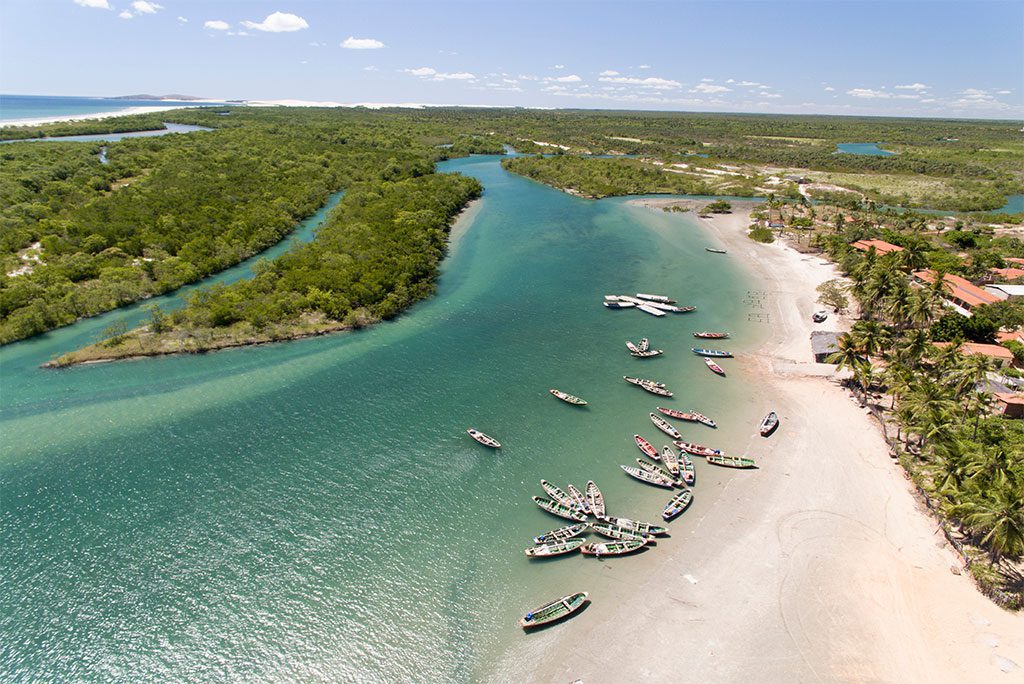
Jericoacoara, in the Brazilian state of Ceara, is a beautiful, laid-back town that sits between the Atlantic Ocean and the Jericoacoara National Park. The hamlet, which goes by the names Jeri and Jijoca, is located on an isolated stretch of Brazil’s coast and has recently become a popular tourist destination due to its stunning natural beauty.
Hiking, swimming, and watersports are all quite popular in Jeri, which is surrounded by wonderful dunes and lagoons in addition to its magnificent beaches. The best way to take in all of the breathtaking beauty is on horseback or in a dune buggy; Pedra Furada, also known as the “Arched Rock,” is a must-see landmark.
However, Jericoacoara’s spectacular landscape, abundance of outdoor activities, and surprising bustling nightlife more than make up for the town’s inconvenient location.
16. Sao Paulo
Sao Paulo is the most populous city in Brazil and one of the most populous in the world. Sao Paulo, in southern Brazil, is renowned for its towering buildings, delicious cuisine, and thriving arts community. The city that welcomes people from all over the world is home to the biggest Japanese population outside of Japan.
Paulista Avenue is the city’s busiest strip, packed with stores, malls, art galleries, theatres, restaurants, and cafes, and it serves as a dividing line between the city’s historic and modern neighbourhoods. Despite its reputation as a concrete jungle, Sao Paulo is actually home to several green spaces, including a small section of the Atlantic rainforest.
15. Brasilia
The Brazilian government moved its capital to the mountainous region of the country known as Brasilia in 1960. Brazil’s then-president, Juscelino Kubitschek, gave the order to build the city, which has been called a paradise, in the late 1950s. Each wing of contemporary Brasilia serves as a distinct administrative, economic, residential, and cultural zone.
Many people go to Brasilia to marvel at the city’s cutting-edge buildings. The Presidential Palace, Congress, and the Supreme Court all call Three Powers Square home. Additionally, the TV Tower and the President’s official mansion, the Palácio da Alvorada, are notable structures. The glass top of the Brasilia Cathedral resembles outstretched palms reaching for the sky.
Brasilia is more than just a bunch of steel and glass, however; the city also has a massive man-made lake and a number of gorgeous parks where residents and visitors alike may enjoy a wide range of recreational opportunities. The city of Brasilia also serves as a major transit hub for those travelling around the country.
14. Ouro Preto
Ouro Preto, nestled in the Minas Gerais highlands, is Brazil’s most beautiful and well-known colonial village. As one of the most important hubs of the Brazilian Gold Rush, the city saw an influx of money, power, and status.
Its historic district is spread out over a number of hills, and it is characterised by narrow, steep alleys lined with beautiful, ancient houses and churches dating back to the 18th century. Visitors may also explore the city’s numerous fascinating museums, many of which are dedicated to the art of Aleijandinho or Ouro Preto’s rich mining history.
Various tourists take advantage of guided tours of the city’s numerous mines and historical sites. More and more people have been flocking to Ouro Preto’s historic streets to celebrate the city’s colourful carnival in recent years.
13. Bonito
Bonito, a little community in the southwestern part of Mato Grosso do Sul, is a fantastic base from which to explore the stunning Pantanal area of Brazil. Although the town itself doesn’t have a tonne of attractions, it has long been a leader in sustainable ecotourism in Brazil.
The landscape around Bonito is teeming with natural beauty, including several waterfalls, rivers, and gigantic sinkholes and caverns with lakes where you may go swimming or snorkelling. In Serra da Bodoquena National Park, visitors may go on hikes through the tropical rainforest and see a wide variety of exotic animals and plants.
Excursions from Bonito’s pousadas are offered by a plethora of tour operators, and visitors can expect to learn a lot about the Pantanal’s many ecosystems and flora and fauna. Anhumas Abyss is a popular spot for snorkelers who want to see the underwater stalagmites, while canopy walks in the rainforest and a visit to Blue Lake Cave, one of the biggest flooded caverns in the world, are other favourites.
12. Fortaleza
Fortaleza is one of the most visited cities in Brazil due to its beautiful beaches, exciting shopping, and vibrant culture. Fortaleza, the capital of Ceará state on Brazil’s northeastern coast, is the country’s fifth-largest city and is famous as the birthplace of forró music.
Fortaleza has several attractions, including colonial and contemporary buildings. The city’s restaurants, stores, and movie theatre can be found on the central plaza, known as Praça do Ferreira. You may also see street performers at Praça José de Alencar.
It is no surprise that many visitors choose to stay in Fortaleza to enjoy the city’s 16 kilometres of urban beaches. Praia do Futuro is the most well-known, while Iracema, Mucuripe, and Meireles are all highly regarded. The beaches are fantastic places to swim, sunbathe, fish, and watch surfing contests; they also have lodging, dining, and shopping options. Many tourists begin their exploration of the Ceará coast at Fortaleza, from where they may access the region’s world-famous beaches, rolling dunes, and charming fishing communities.
Among the many things to do in Fortaleza is go shopping. Clothing is inexpensive in this city because of the huge textile industry located here. While the city’s many markets specialise in locally made goods and fresh fish and fruit, the Iguatemi Mall has something for everyone.
11. Chapada dos Veadeiros National Park
In addition to its dazzling lakes, spectacular waterfalls, and magnificent scenery, Chapada dos Veadeiros has some of the oldest and most biodiverse tropical ecosystems in the world. The magnificent microregion is located in the state of Goias, around three hours’ drive north of the Brazilian city of Brasilia.
The magnificent Chapada dos Veadeiros National Park, situated on a prehistoric rainforest-covered plateau, is the primary draw to this region. There are many breathtaking waterfalls tucked away in the park’s beautiful vegetation, and exploring the park’s rugged terrain is a fascinating pastime.
Moon Valley, so called because of its lunar scenery, is another must-see. There are a tonne of waterfalls and rivers in the region, and you should definitely go swimming and tubing in them. The city of Alta Paraiso and Sao Jorge, a city and a town, respectively, are the two most popular locations to stay in the vicinity of Chapada dos Veadeiros’ most popular attractions.
10. Parati
Parati, in the Brazilian state of Rio de Janeiro, is a famous tourist destination because of its location along Brazil’s Green Coast and its abundance of tropical woods, waterfalls, green seas, and coastal mountains. This stunning city, also known as Paraty, was founded by the Portuguese on the banks of Ilha Grande Bay.
Cobblestone lanes and brightly painted colonial homes may be found in Parati’s historic centre, where many of the buildings have been converted into pousadas, or Brazilian B&Bs. The colonial forts, which still have their original walls and guns, are among the most popular tourist destinations. Parati’s old town is completely pedestrian-only.
Numerous parks and environmental preserves dot the city’s outskirts, providing hikers with access to the area’s mangrove forests, waterfalls, and plethora of native flora and fauna. Native American communities are also open to tourists. Beautiful beaches in the bay are perfect for sunbathing, swimming, kayaking, snorkelling, scuba diving, and taking a boat tour.
9. Recife
Recife, the capital of the state of Pernambuco and one of Brazil’s biggest and most significant cities, is sometimes referred to as the “Venice of Brazil” because of its extensive network of canals and bridges. Recife’s ancient old town, beaches, and dynamic culture make it a worthwhile destination to explore, despite the city’s less-than-ideal location within the tropical woods with numerous islands and waterways.
Much of the city’s historic centre in Recife, which was founded as a Dutch colony in the early 17th century, has many of the colonial architectural styles typical of that time period. There are several notable buildings in Brazil, including the oldest synagogue in the Americas and one of the country’s most stunning examples of baroque architecture, the Franciscan Convent of Saint Anthony. Aside from its historical significance, Saint Peter Square is often photographed because of its attractive backdrop and the abundance of colourful buildings, shops, and restaurants.
Sao José Market is the city’s major marketplace, where many visitors go to buy souvenirs, medicinal plants, and fresh, regionally-grown foodstuffs. Some of Brazil’s finest sand may be found near Recife. Boa Viagem, with its powdery white beaches, crystal blue water, and colourful coral reef, is the most popular beach and is lined with hotels, restaurants, and bars.
8. Chapada Diamantina National Park
The Chapada Diamantina National Park is located in the middle of the Brazilian state of Bahia in the northeast, and was established there in 1985 with the express purpose of preserving and publicising the region’s beautiful natural settings and diverse ecosystems. The park is a popular destination for hikers, campers, and other outdoor enthusiasts because of the variety of landscapes it offers.
The park’s location on a plateau means that it is quite mountainous, with the highest peaks rising to an altitude of almost 2,000 metres. The plateau is surrounded by craggy cliffs and a number of spectacular waterfalls, the most impressive of which is the 380-meter-tall Cachoeira da Fumaca, the highest in Brazil. Its rough landscape is dotted with enormous caverns, the most notable of which are Lapa Doce and Pratinha.
Due to its beautiful scenery and variety of ecosystems, Chapada Diamantina National Park is growing in popularity as a vacation spot. Campsites are plentiful, and hotels in nearby cities like Lencois and Vale de Capao are also an option. A lot of people visit the region to go fishing, swimming, and horseback riding.
7. Olinda
Olinda, in the northeastern state of Pernambuco, is one of the best-preserved colonial towns in Brazil. It is situated on the Atlantic Coast. The city was founded by the Portuguese in the early 16th century and served as the state capital until it was torched by the Dutch, at which point the state ceded power to the neighbouring city of Recife.
Olinda’s colonial churches, beautiful old buildings, and plethora of artist’s workshops may all be found in the town’s historic downtown, which is nestled on a hilltop among trees. Olinda’s devotion to the visual arts is reflected in the abundance of galleries, fairs, and stores offering anything from fine art to handmade wares.
Olinda offers a colourful Carnival celebration every year, distinct from those of Rio de Janeiro and Salvador in that it is more enjoyable during the daylight and emphasises the music, dances, and customs of Africa. Olinda’s Carnival is known for its parades, elaborate costumes, enormous puppet dolls, street parties, and maracatu and frevo music.
Olinda is known for its lively culture, which is on full display even when the Carnival isn’t in town. There are parties, pubs, and nightclubs open all hours of the night on the weekends, and singing groups entertain passers-by with traditional melodies.
6. Pantanal
The Pantanal, which extends over most of western Brazil and into neighbouring countries like Paraguay and Bolivia, is the biggest and most biodiverse tropical wetland on Earth. The region’s gorgeous beauty and fantastic animals have made it more popular with tourists, despite the fact that its secluded and aquatic character does provide some obstacles.
About 80% of the floodplains are under water during the wet season, so flying or travelling by boat are the main options for getting about. It’s worth it, however, since the vast grasslands and wetlands here support an incredible diversity of wildlife.
As tourists explore the region’s many ecosystems—from marshes and savanna to lakes, woodlands, and wetlands—they’re almost guaranteed sightings of caiman and capybara. A journey to South America wouldn’t be complete without seeing a jaguar, and the Pantanal is the best site on the continent to do so.
5. Florianopolis
On the picturesque island of Santa Catarina, the state capital of Florianopolis is situated. Known for its beautiful scenery, this area is often ranked as one of the top locations to live in the United States.
Florianopolis is a major political, cultural, and economic hub of Brazil, and as such, it is a well developed metropolis with several upscale dining and retail options, as well as exciting nightlife. Nevertheless, it is a great, laid-back area, and each of its neighbourhoods has its own character.
However, the abundance of wonderful beaches—roughly 60 in all—is the major draw. Florianopolis features a big lagoon, magnificent dunes, glittering waterfalls, and wooded mountains — all of which make for a wonderful setting in which to unwind. Water sports, paragliding, and land activities like hiking and cycling are common on “Magic Island,” as the island is often called.
4. Manaus
Manaus, the capital of the Brazilian state of Amazonas, is a popular travel hub for visitors visiting the Amazon Basin due to its proximity to the region.
Manaus is the biggest city in Northern Brazil and was founded in the early 20th century when the rubber industry began to boom. It is home to notable attractions, including the Amazonas Opera House, the Adolpho Lisboa Market, and the Rio Negro Palace.
Manaus’s port is not only a major transportation centre for many different types of production but also the primary departure point for excursions into the Amazon via river. The Paricatuba Waterfall, the Love Cascade, and maybe even the Pied Tamarin, Brazil’s most critically endangered monkey, are just a few of the incredible sights that visitors can expect to experience on one of these trips. At the Meeting of the Waters, another must-see attraction, the Negro and Solimes rivers travel parallel to one another for almost three kilometres without ever meeting.
Manaus has a tropical rainforest, a river, public parks, a botanical garden, and a zoo. Ponta Negra, one of several beaches in the area, is home to a lively nightlife scene and luxurious hotels.
3. Salvador
Salvador is one of Brazil’s most popular tourist destinations due to its historic Old City, stunning beaches, vibrant culture, and world-famous Carnival. Salvador, the state capital of Bahia in Brazil, is the third-largest city in the country and one of the oldest cities in the Americas.
The colonial buildings, beautiful cathedrals, and historic plazas of Salvador’s Old City are all reminders of the city’s past as a sugar and slave trafficking hub. The ancient district also has several eating establishments, drinking establishments, art galleries, and artisan boutiques. In contrast, the New City section of Salvador is home to a variety of up-to-date projects, including retail malls, theatres, a golf course, and new communities for people to live in.
The beautiful beaches of Salvador are perfect for sunbathing, swimming, and surfing, and the city itself is located on the shore of the Bay of All Saints. Three of the best known are Porto de Barra, Flamengo, and Stella Maris.
Salvador’s yearly Carnival festival is a major tourist draw. This extravaganza is said to be one of the biggest in the world, and it features performances of music and dance, as well as parades, costumed participants, and parties in the streets.
2. Foz do Iguacu
Iguazu Falls, located on the border between Argentina and Brazil, is one of the world’s most spectacular natural attractions. In terms of sheer magnitude and scope, it easily rivals both Niagara and Victoria Falls. It is the longest continuous waterfall system in the world at about three kilometres in length, and it is surrounded by a lush tropical rainforest.
Over the Parana Plateau and into the rocks and ponds below, the Iguazu River carries unimaginable volumes of water every second. Although most of the falls are located in Argentina, the best views, especially of Devil’s Throat canyon, may be seen on the Brazilian side.
Visitors to Iguazu Falls may do more than just stand in amazement and listen to the thunderous roar; they can also embark on boat rides under the falls and hike through the humid jungle that surrounds the falls. Foz do Iguaçu, a sizable and, by Brazilian standards, somewhat secure city, serves as the entry point to the falls from Brazil.
1. Rio de Janeiro
Rio de Janeiro is the most lively and interesting city in the world. Rio de Janeiro, a city in southern Brazil known for its mountains, beaches, and Carnival celebration, is the most visited in all of South America.
The city of Rio de Janeiro is located on one of the world’s biggest ports, and it is surrounded by beautiful natural features such as the Sugarloaf and Corcovado mountains and the world-famous beaches of Copacabana and Ipanema. Tijuca National Park is one of the biggest urban forests in the world and is full of natural flora and animals, despite being located in the middle of a massive city.
Perched high atop Corcovado, Christ the Redeemer, is the city’s most recognisable monument. In addition to the iconic Maracan Stadium, one of the world’s biggest football arenas, other notable structures include colonial fortifications and old presidential mansions.
Unfortunately, Rio is also well-known for its high crime rate and shanties. As a contrast to the more affluent areas of the city, the favelas are characterised by low-quality housing and slum conditions, often being situated on the city’s many mountain slopes.
One of the major carnival festivities takes place in Rio de Janeiro, and is known for its colourful parades, elaborate costumes, dancing, music, fireworks, and street parties. Even when the festival isn’t in town, there are plenty of places to party throughout the city.


